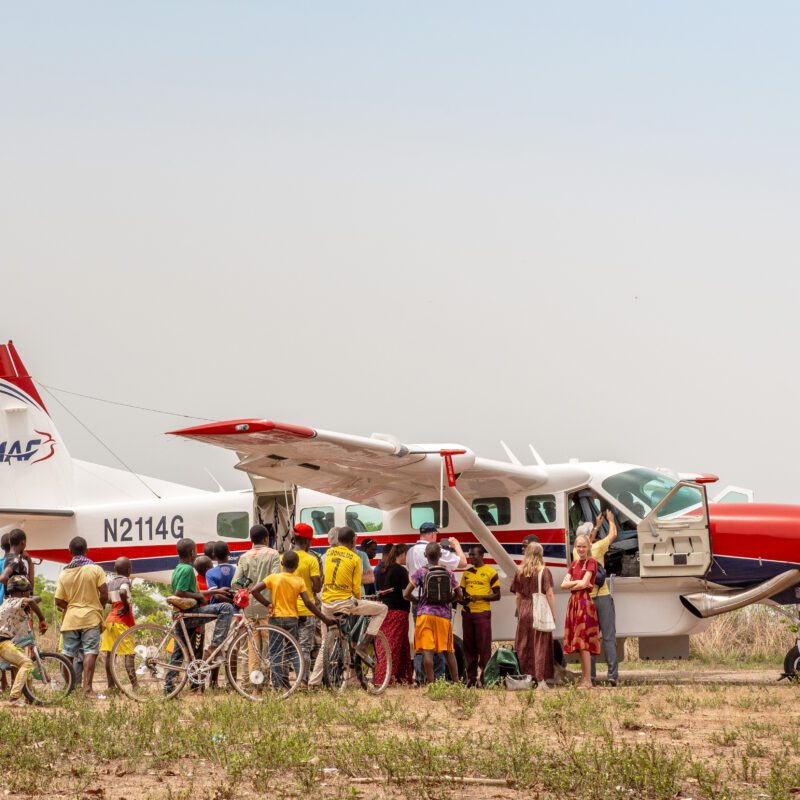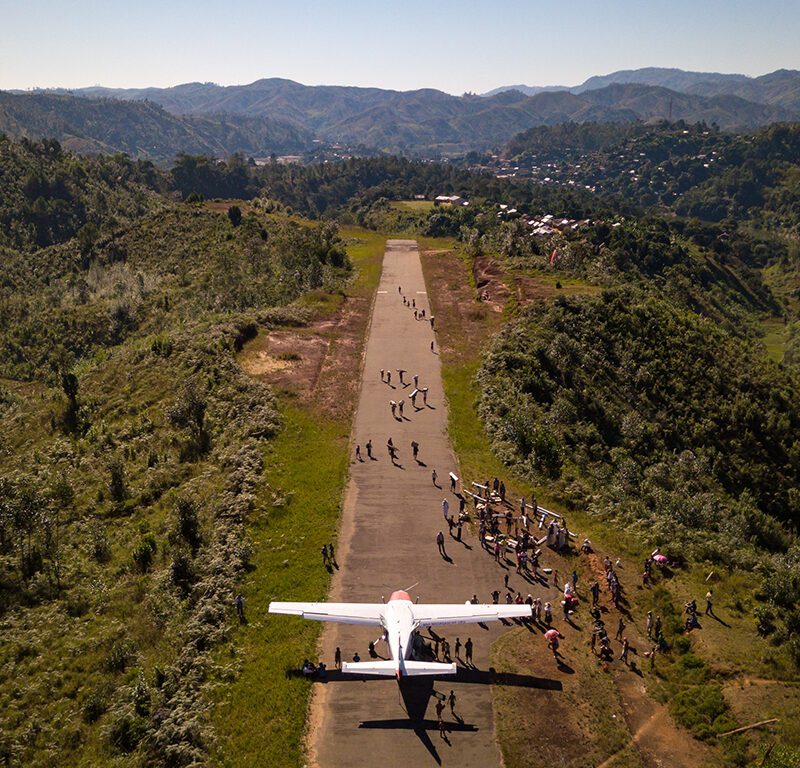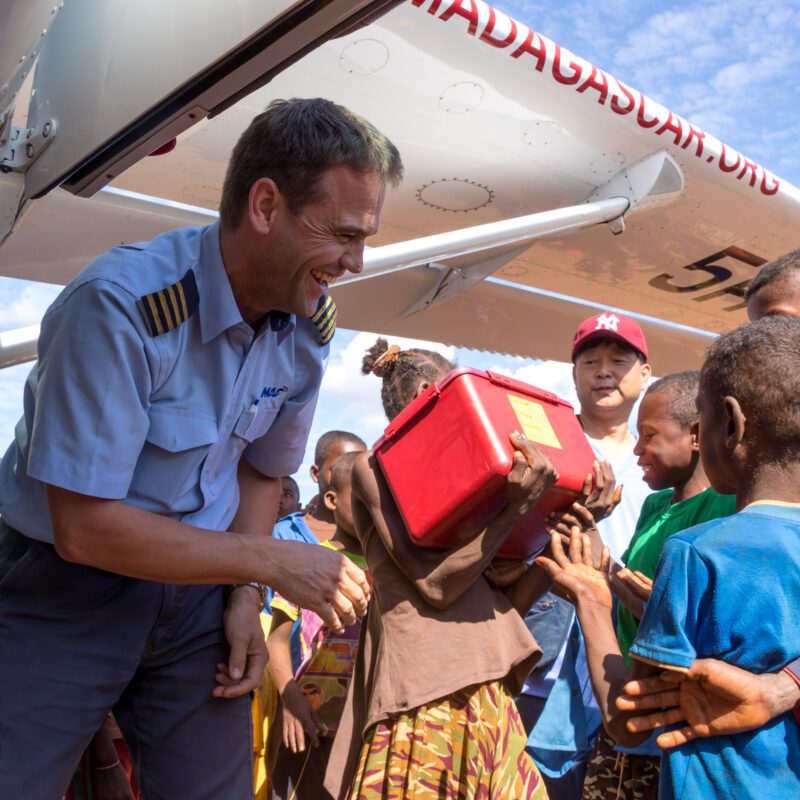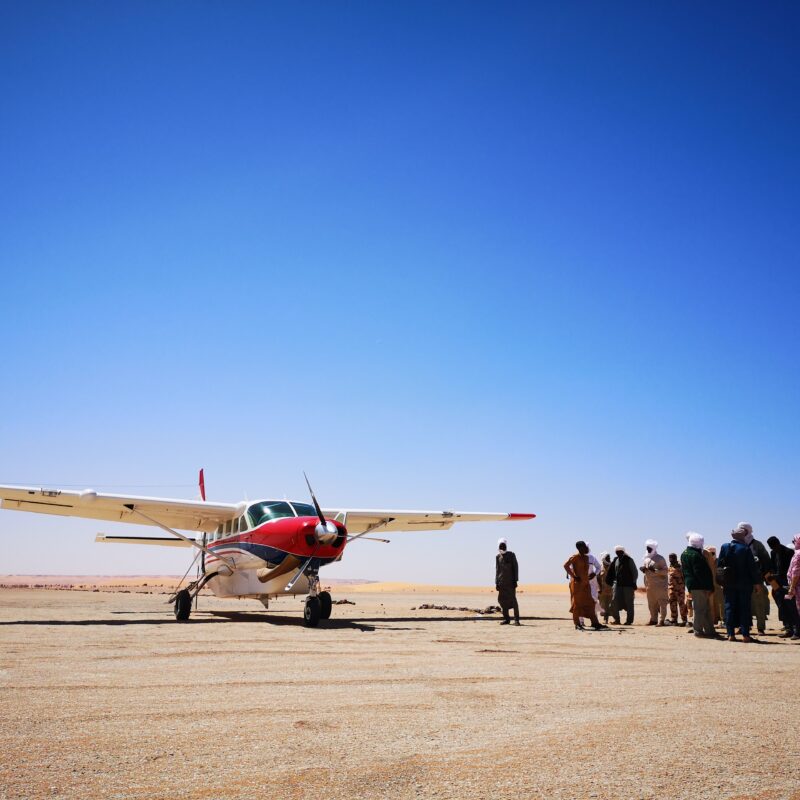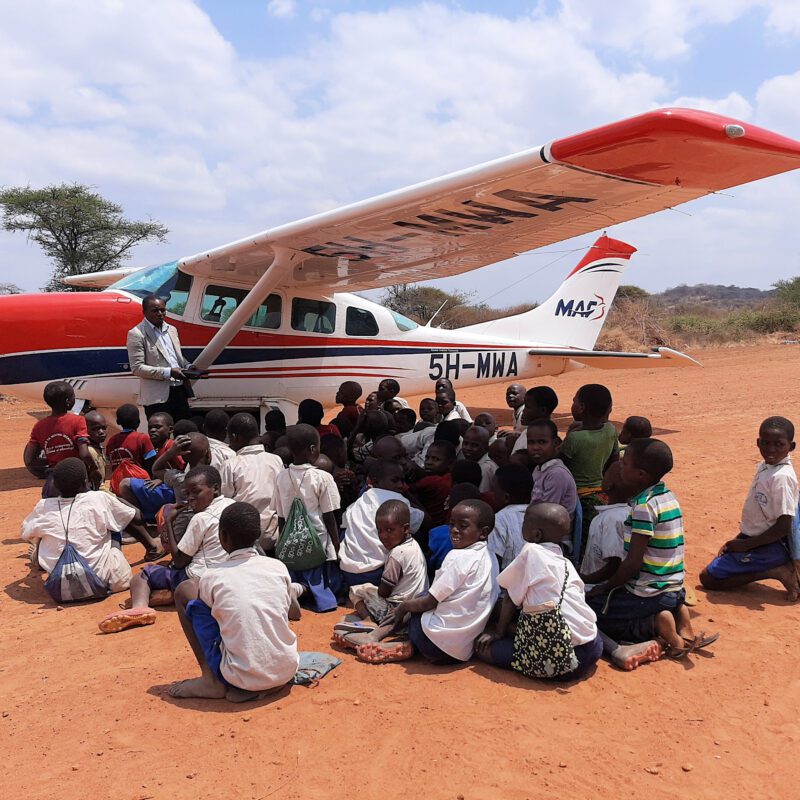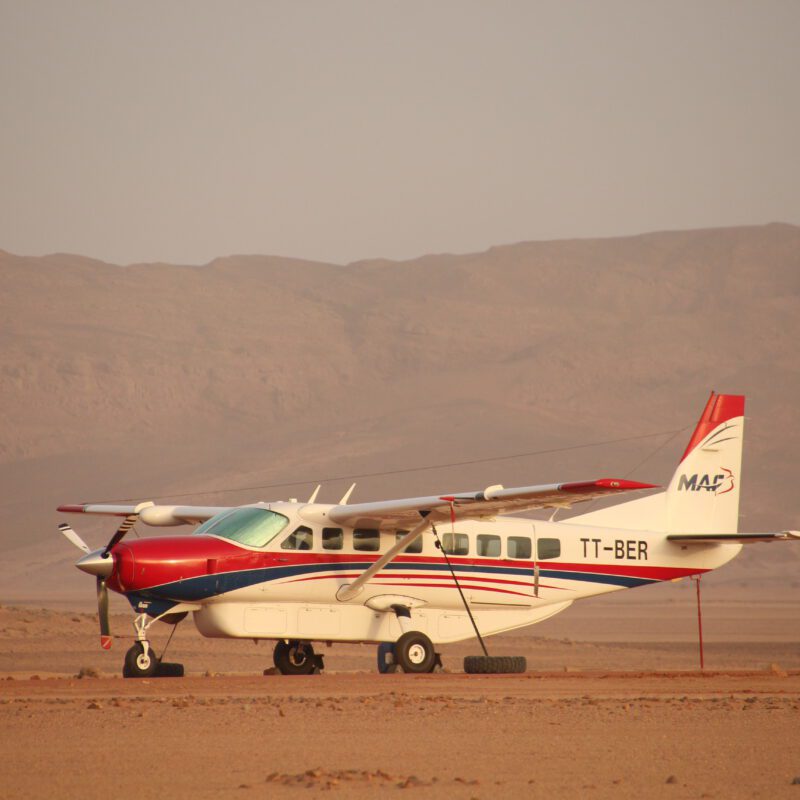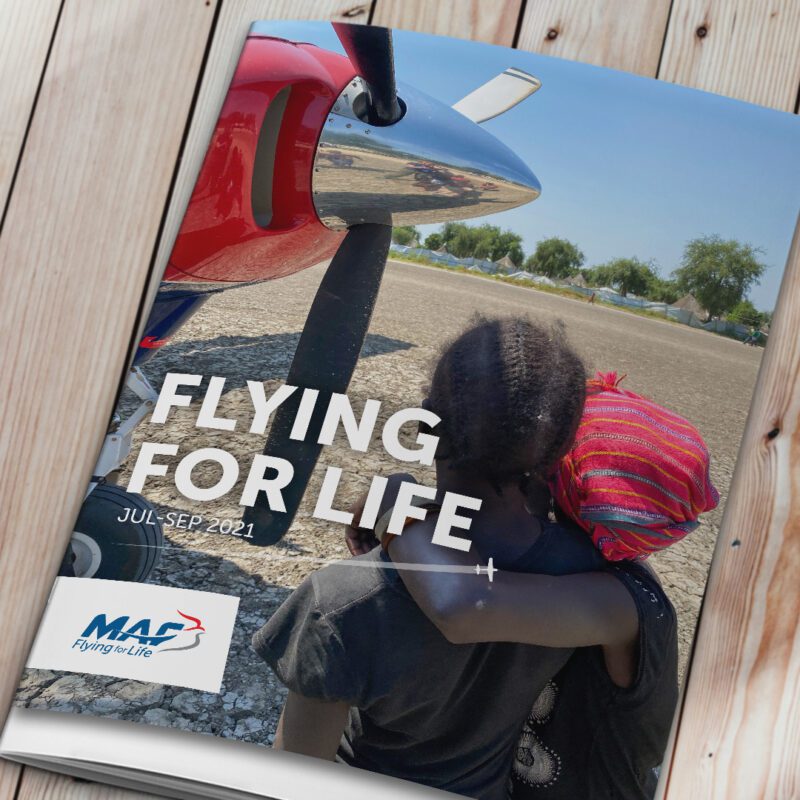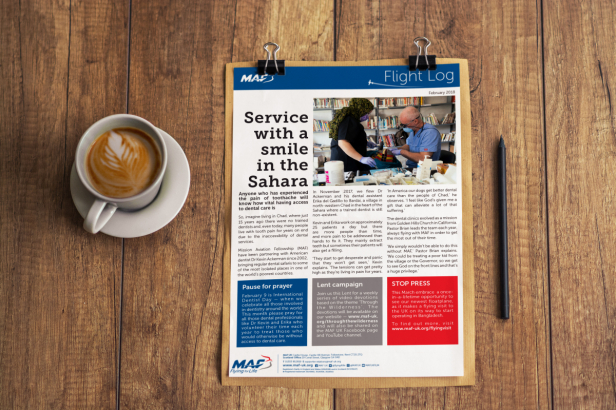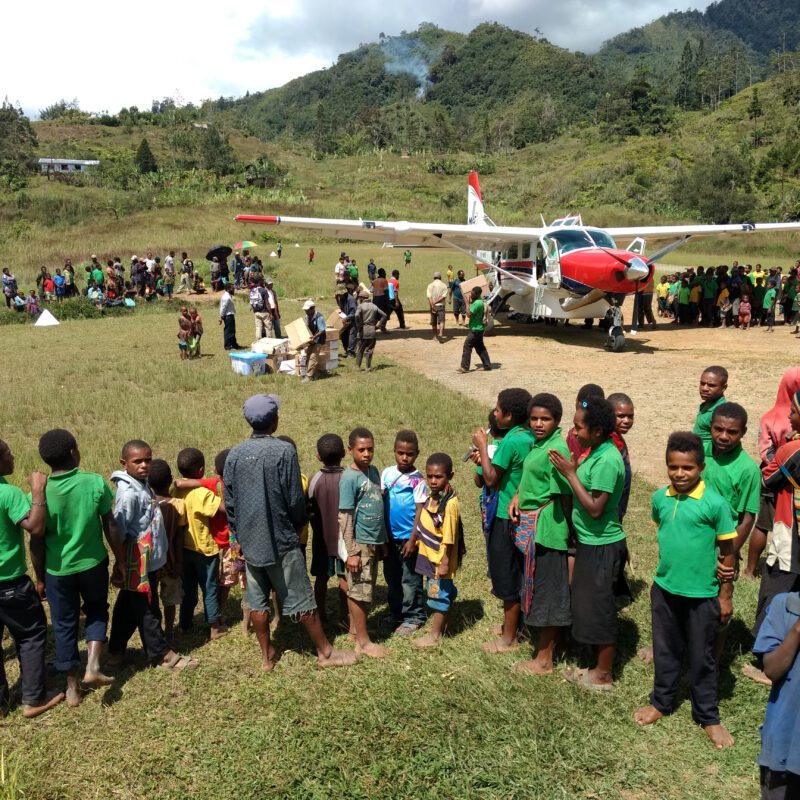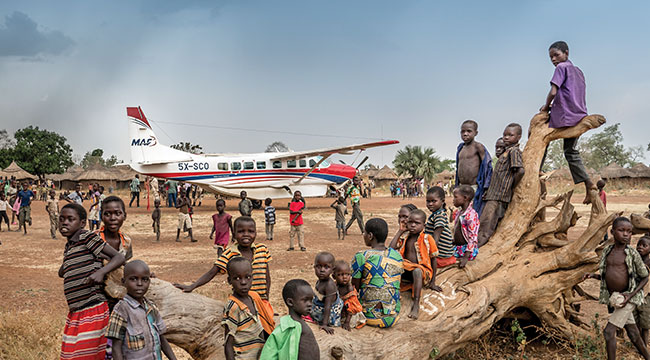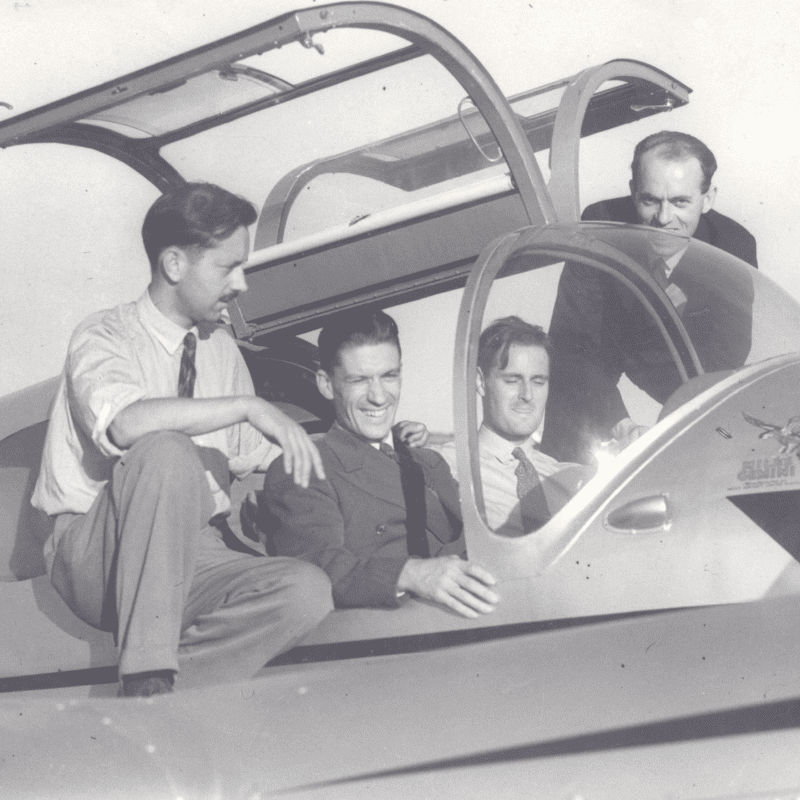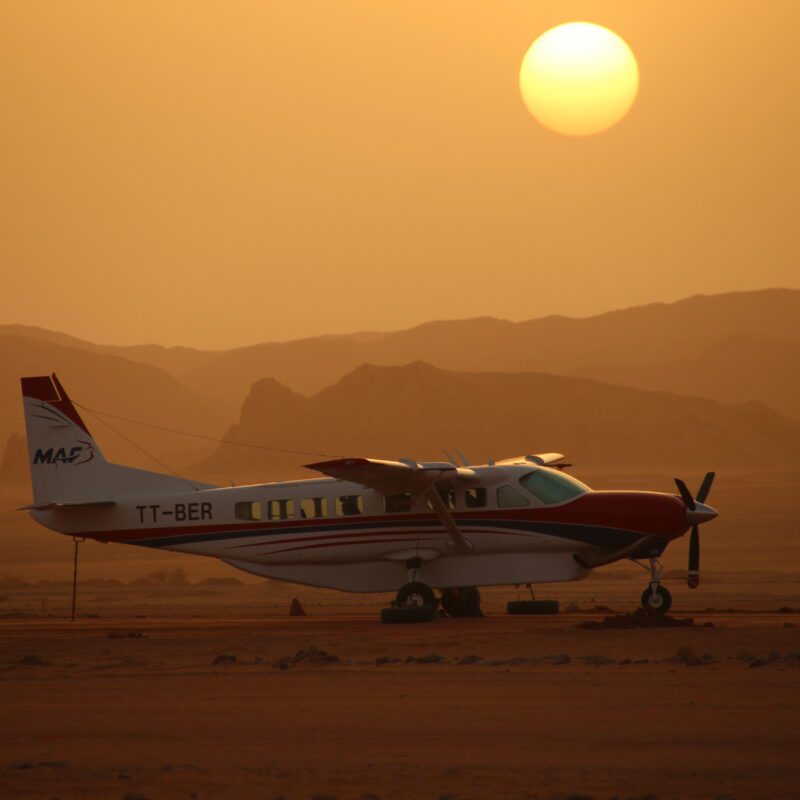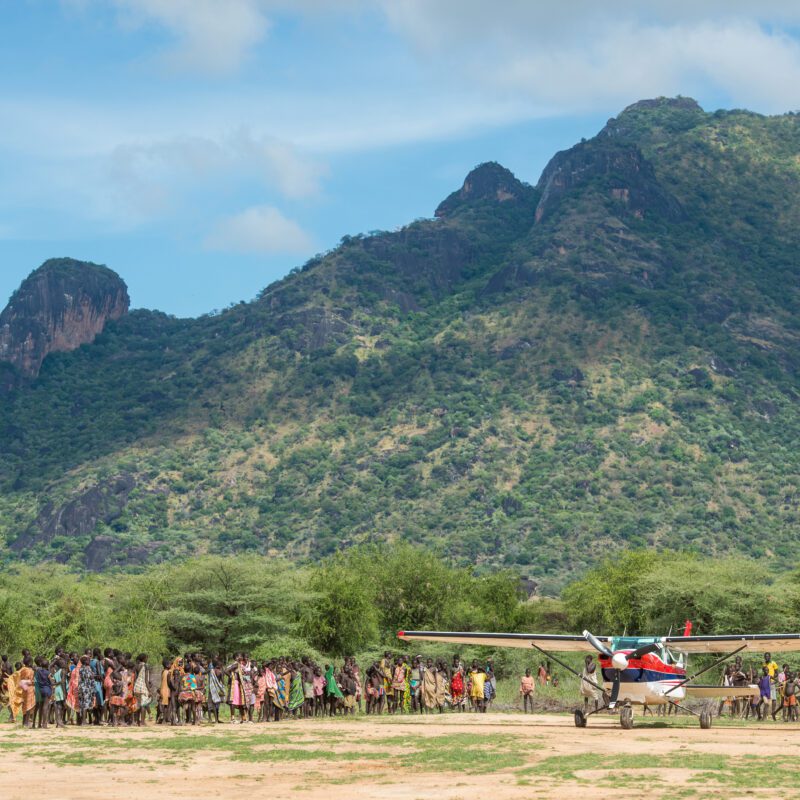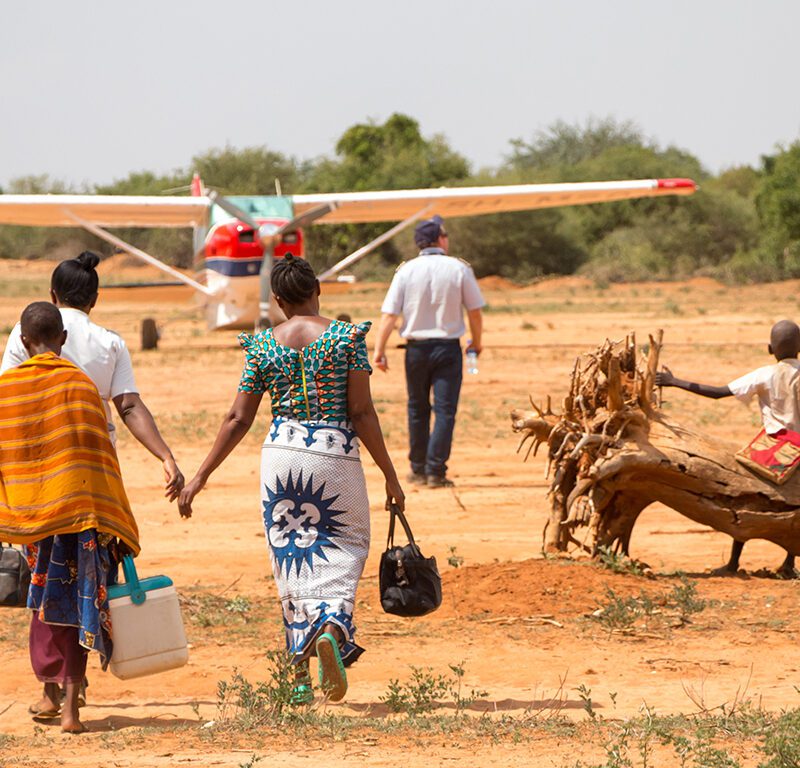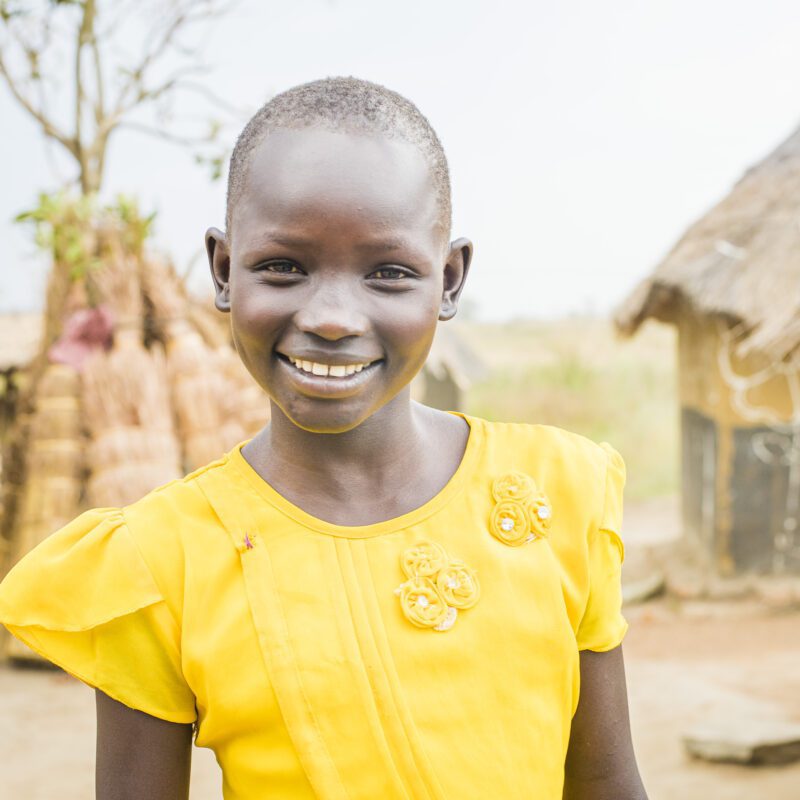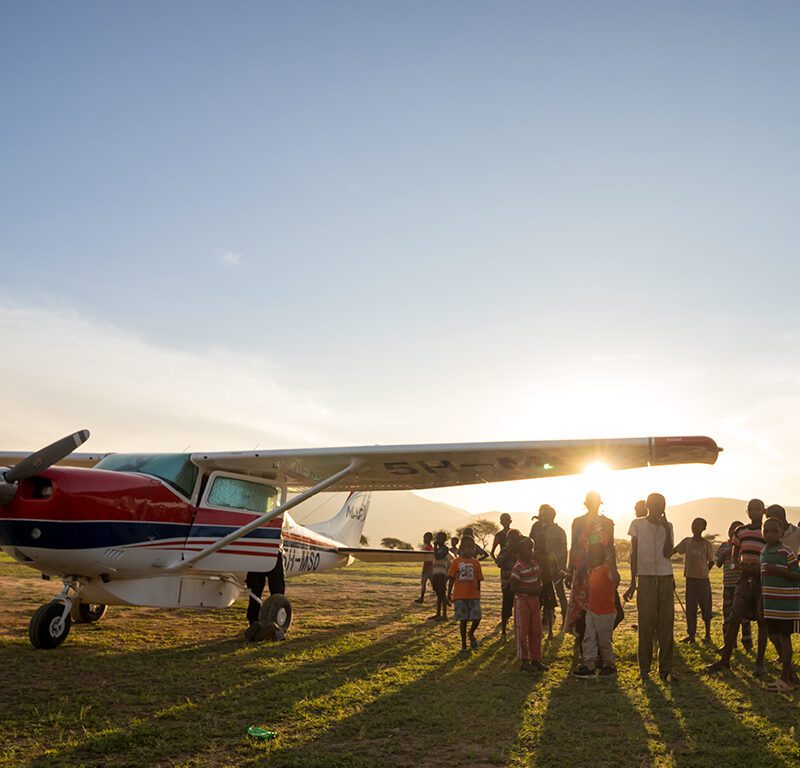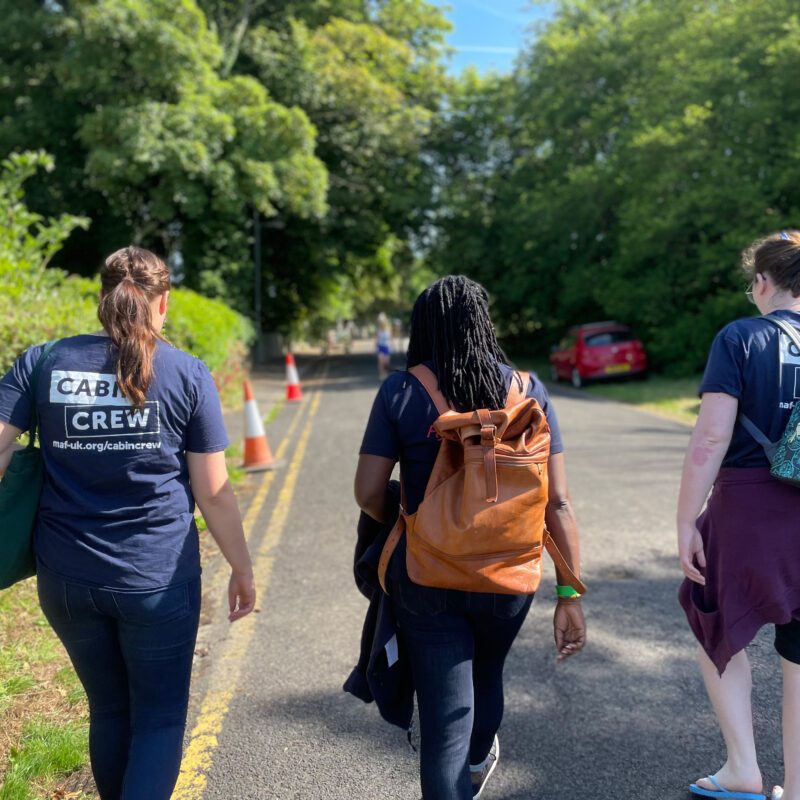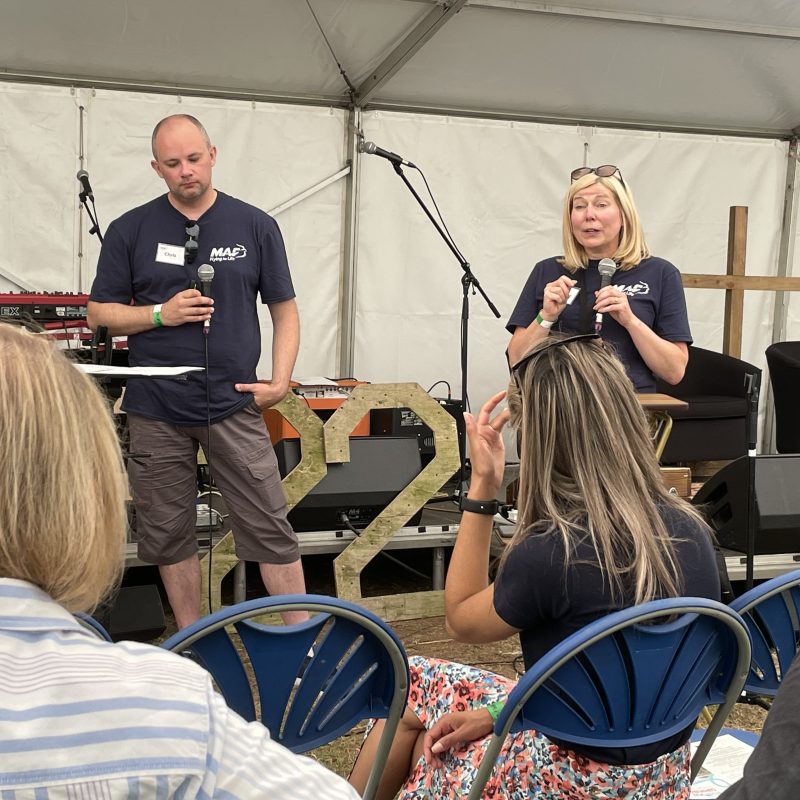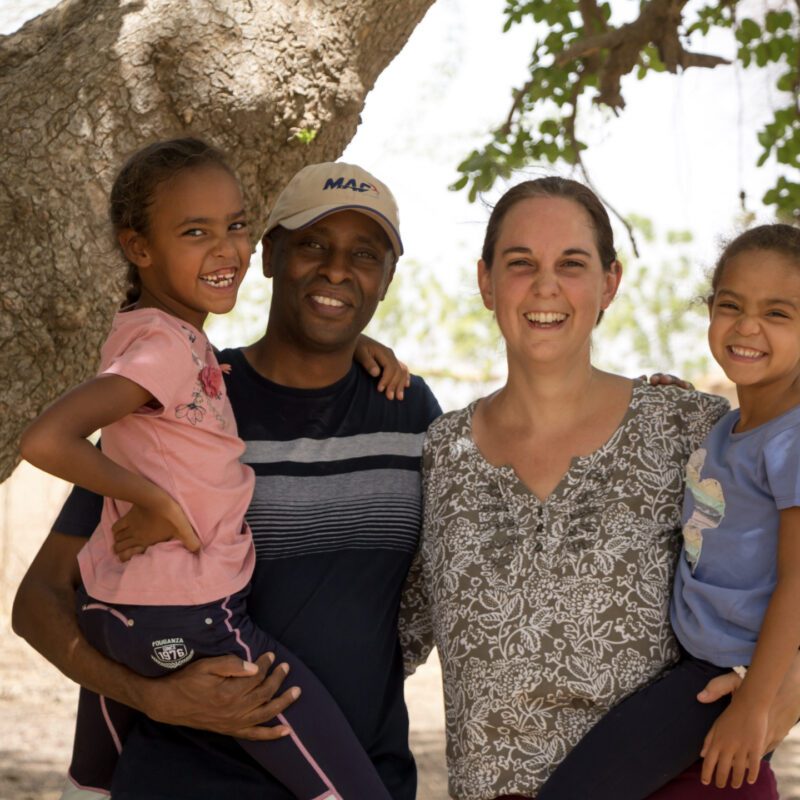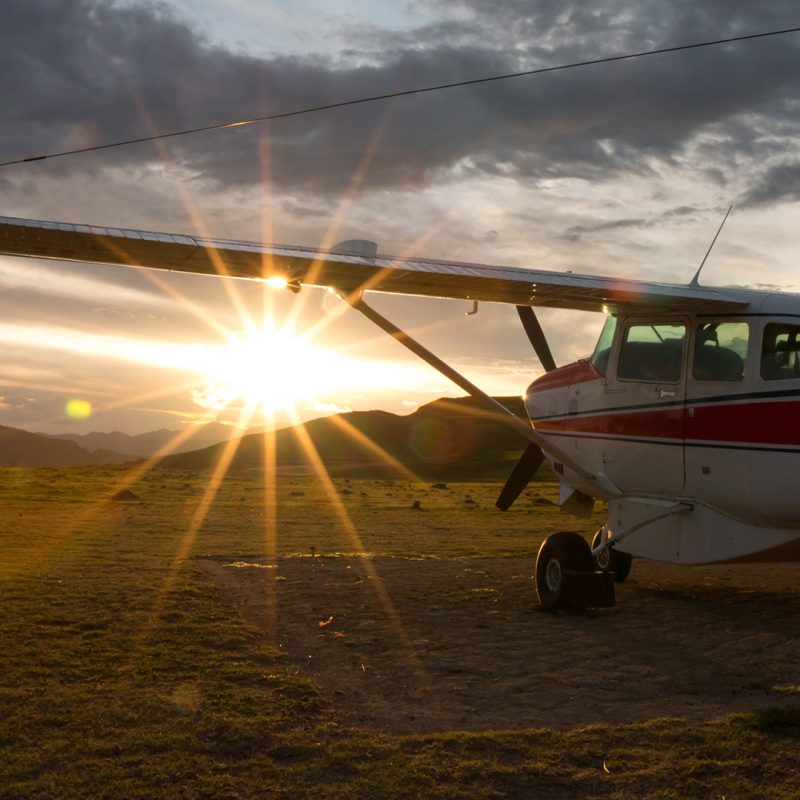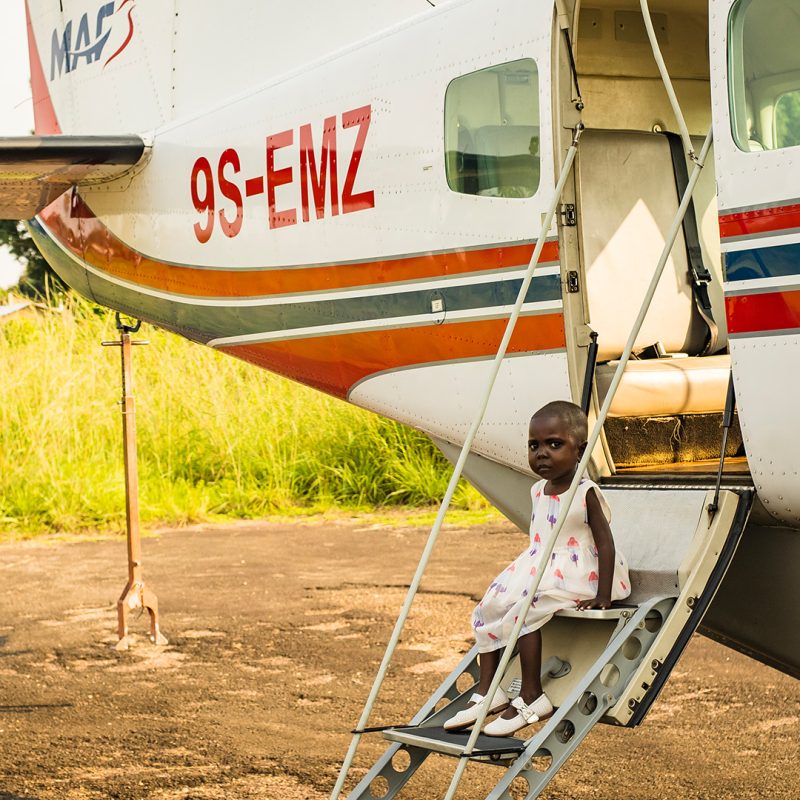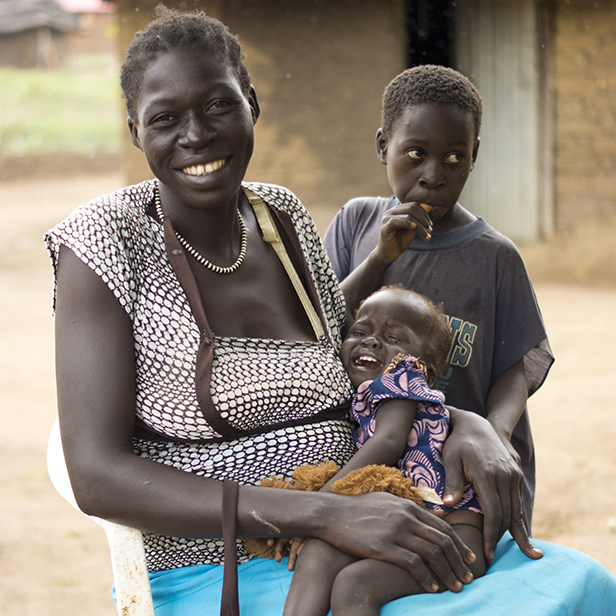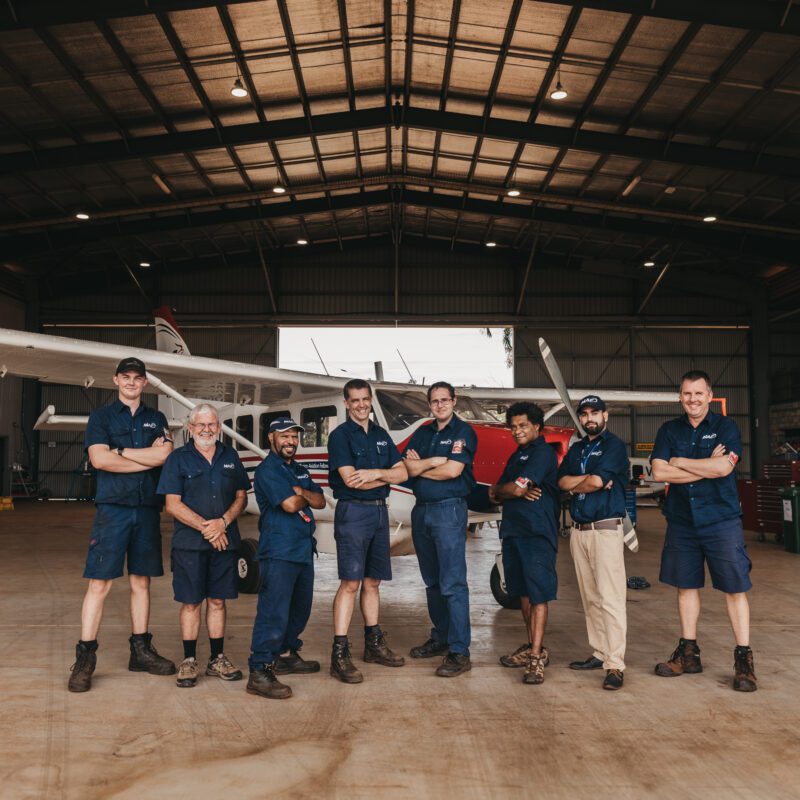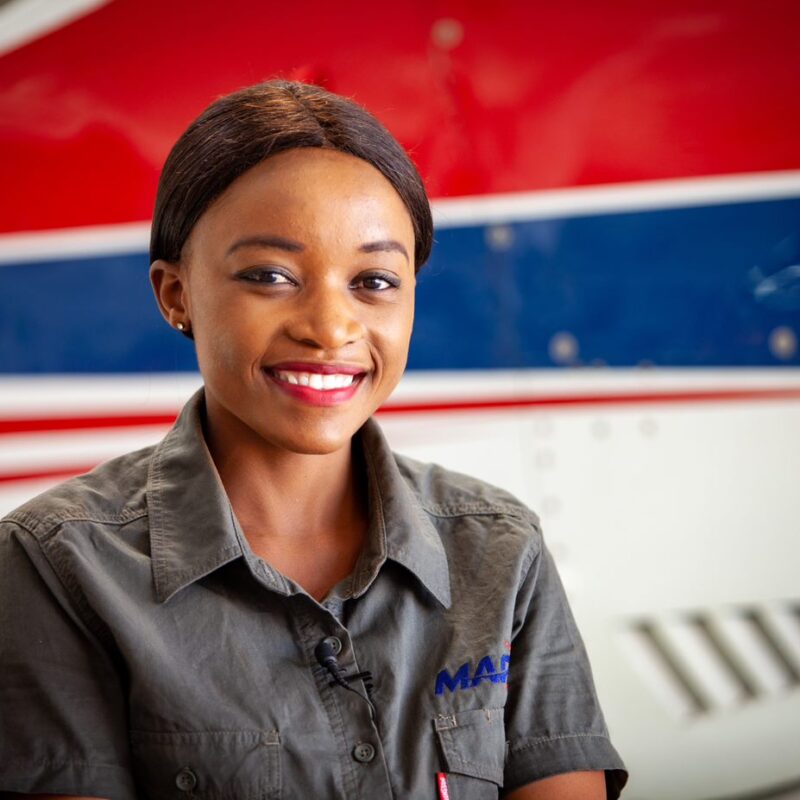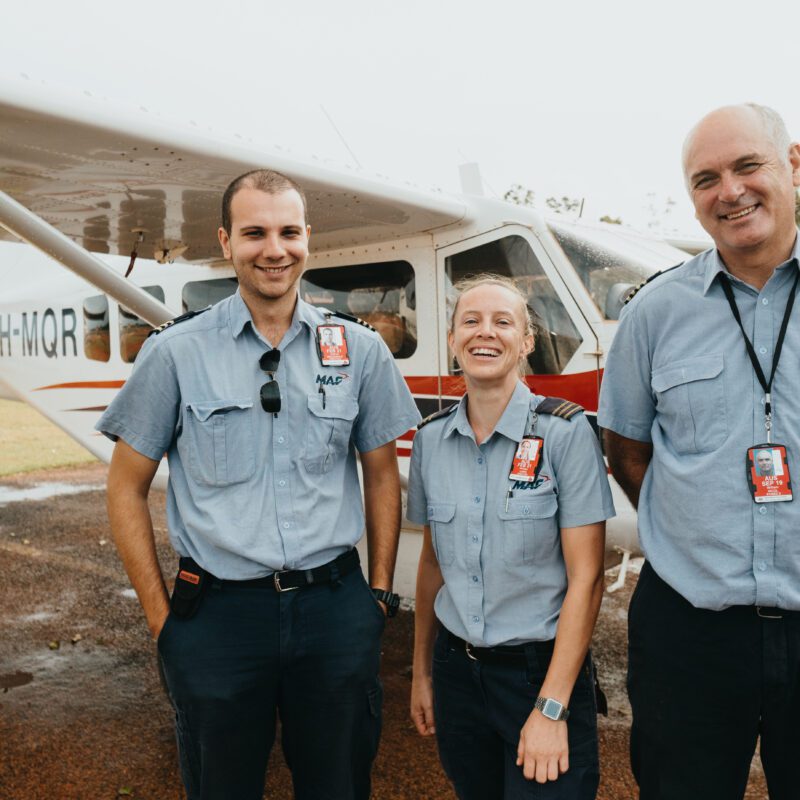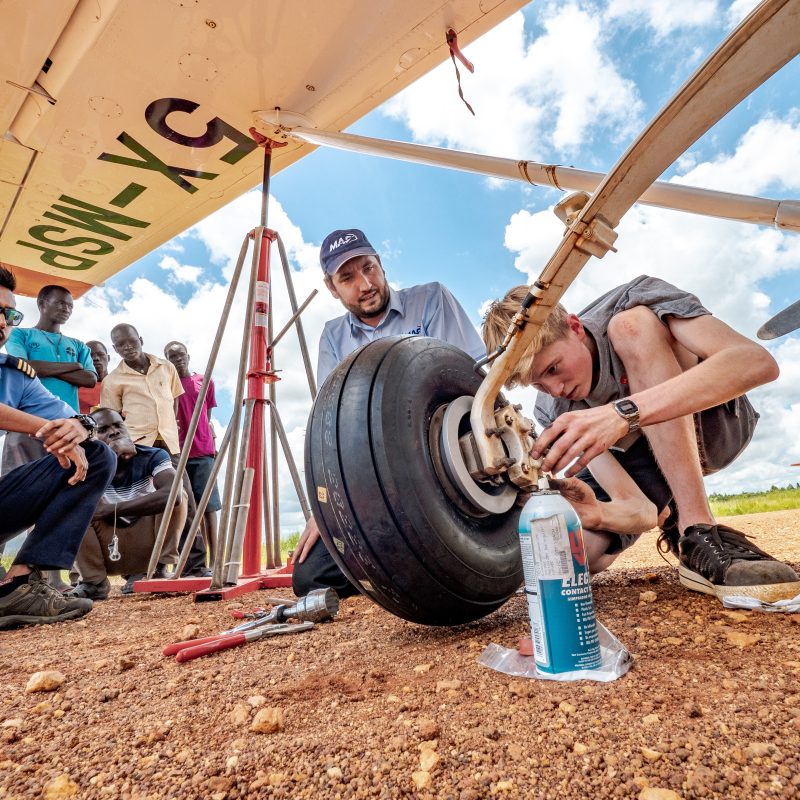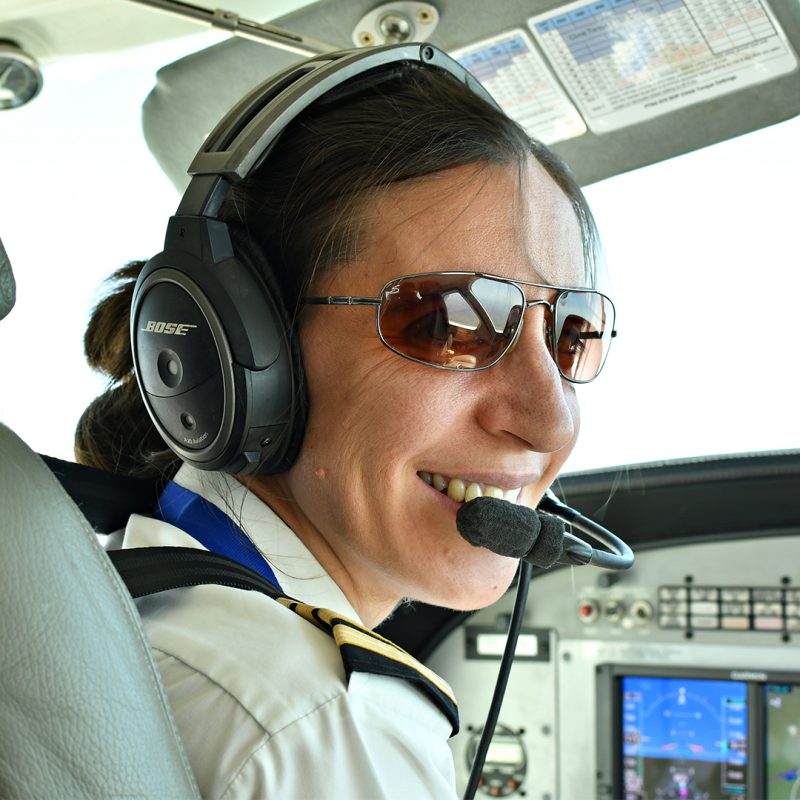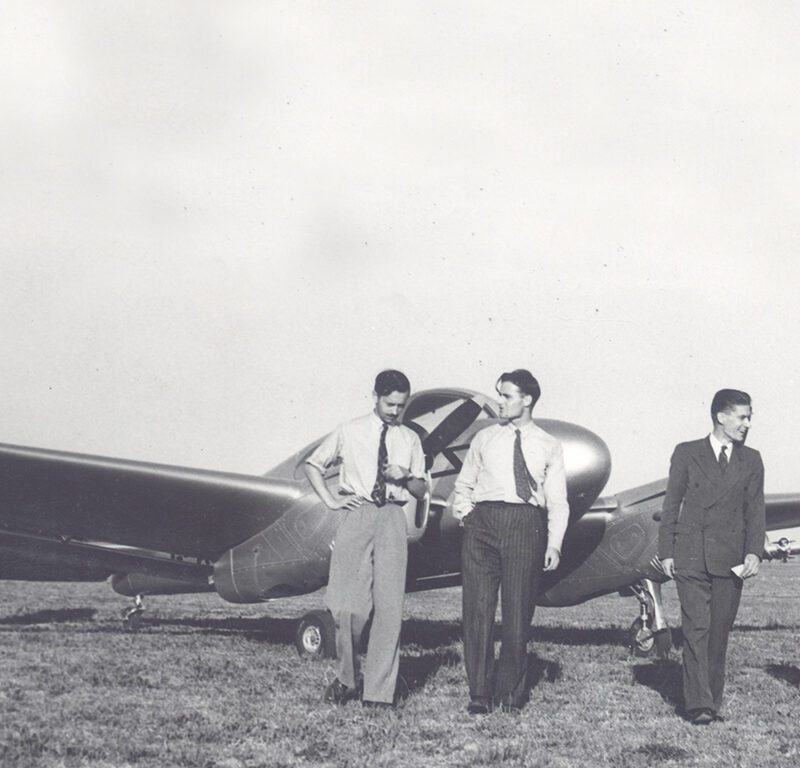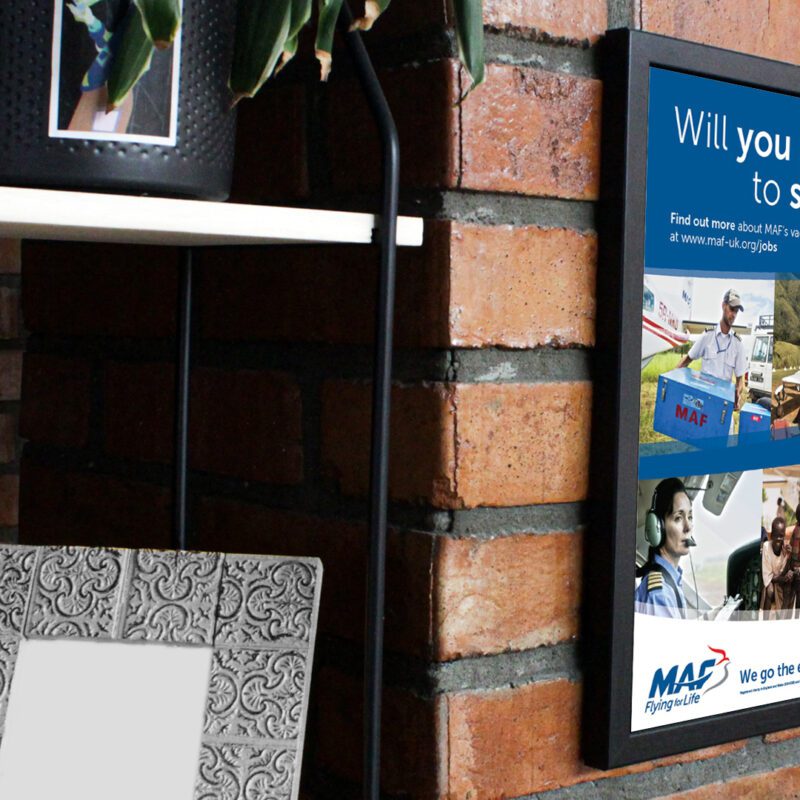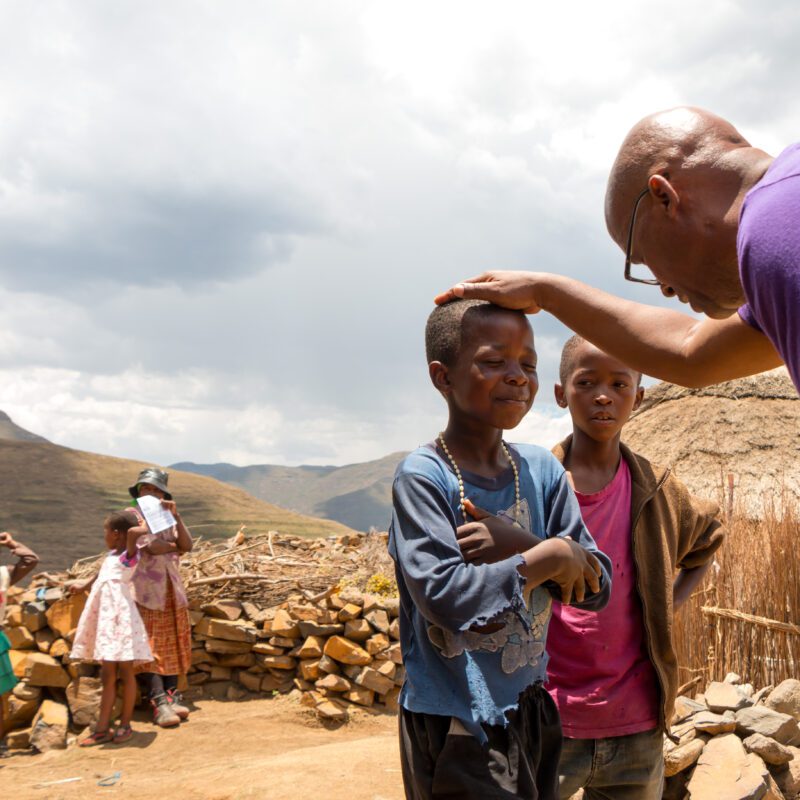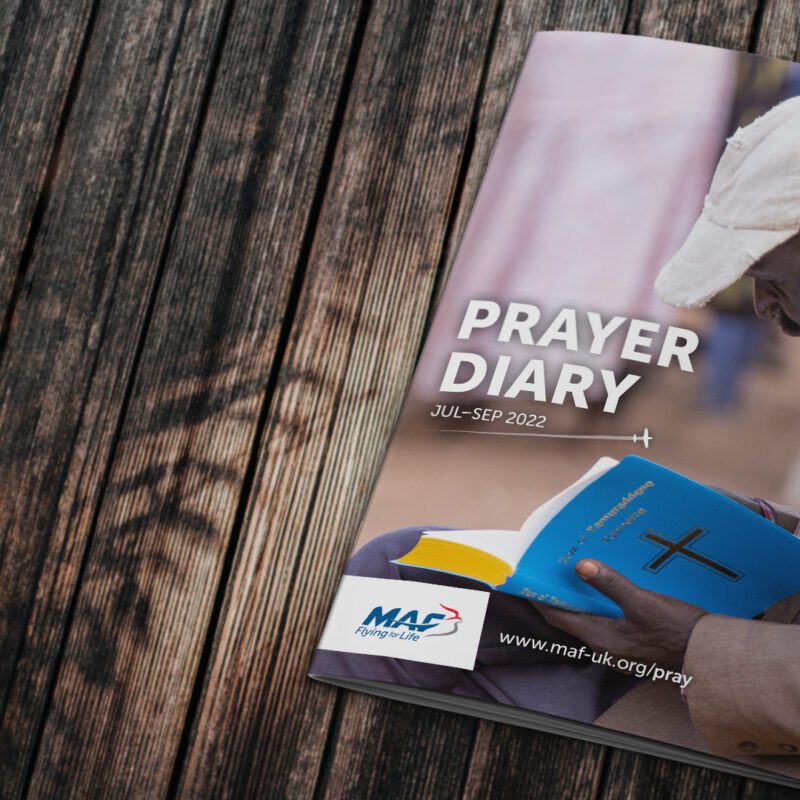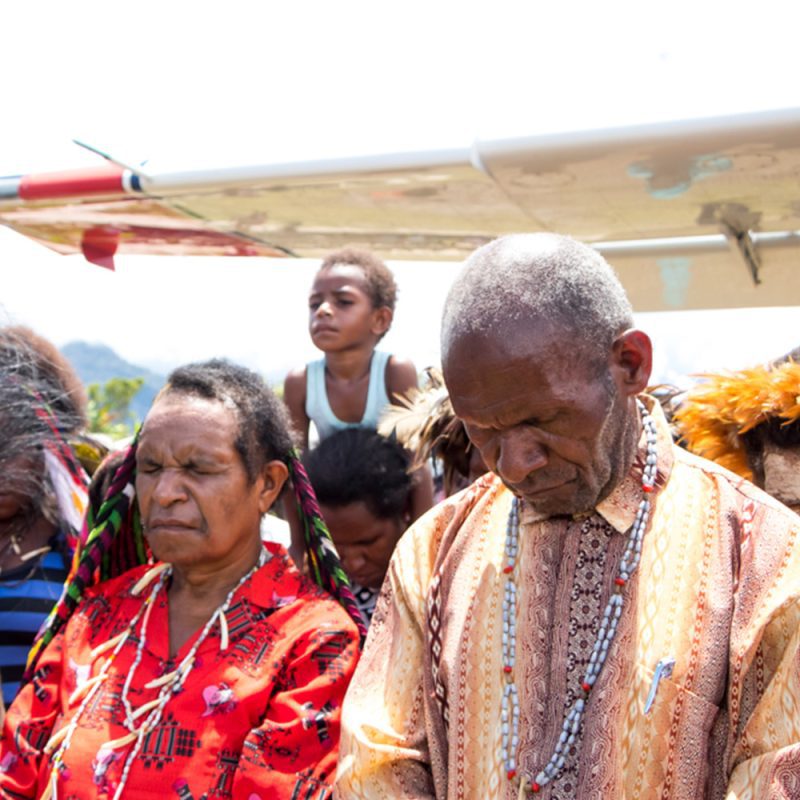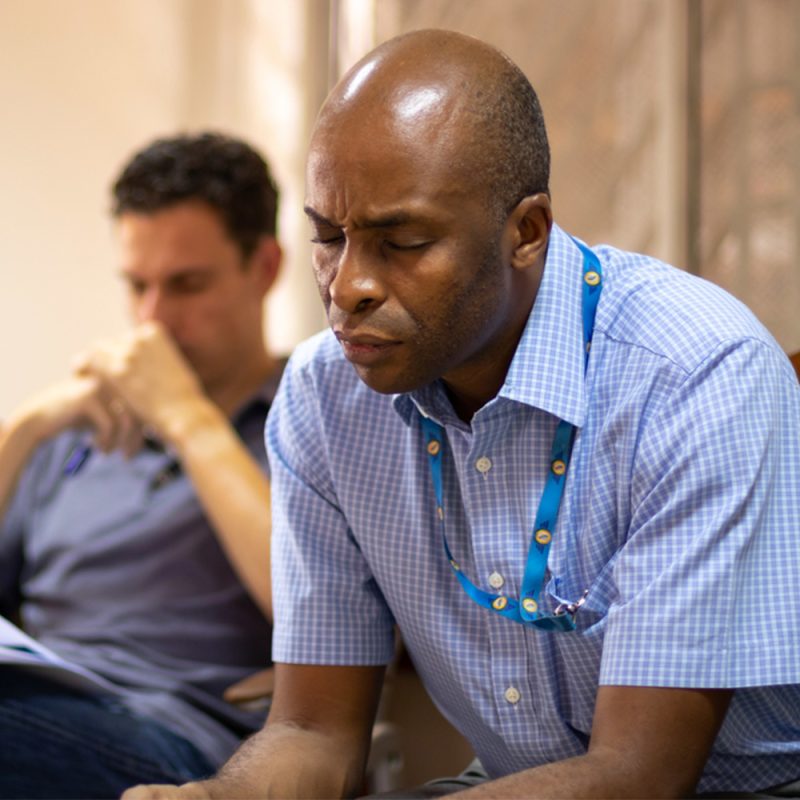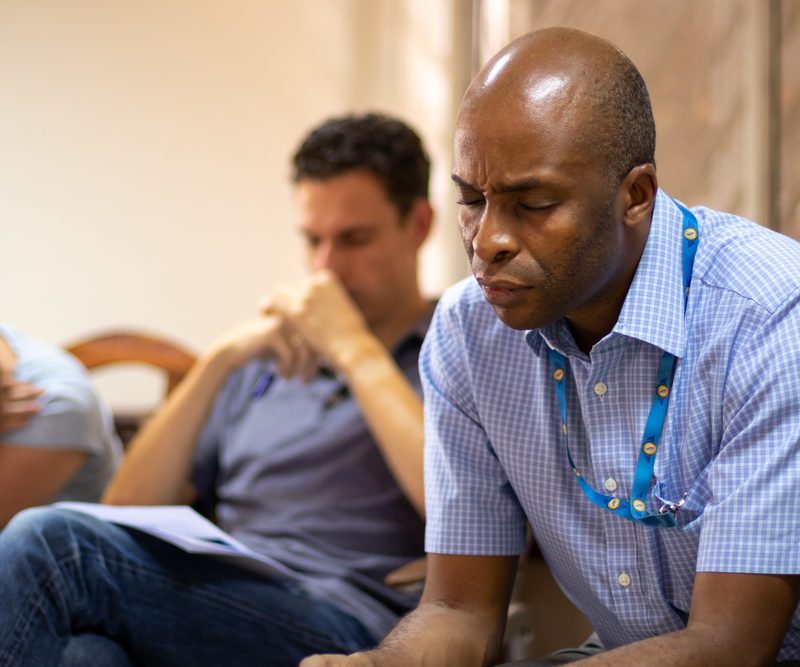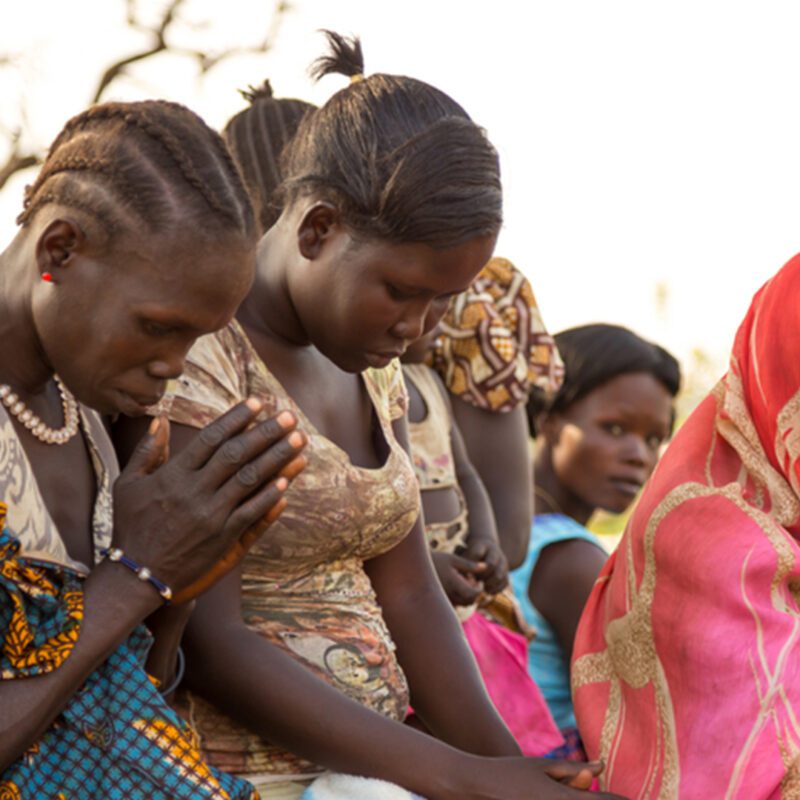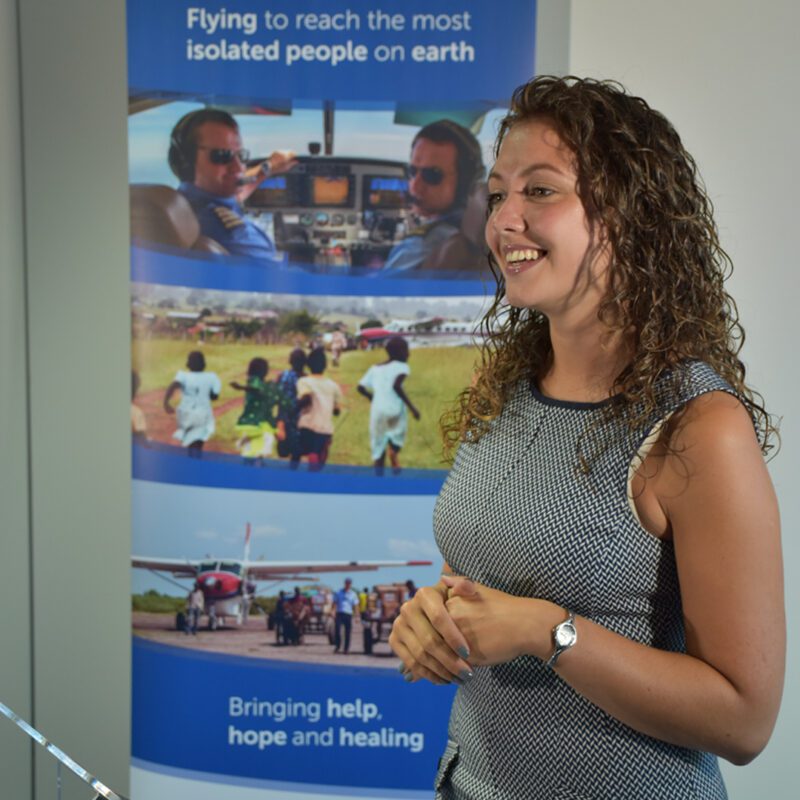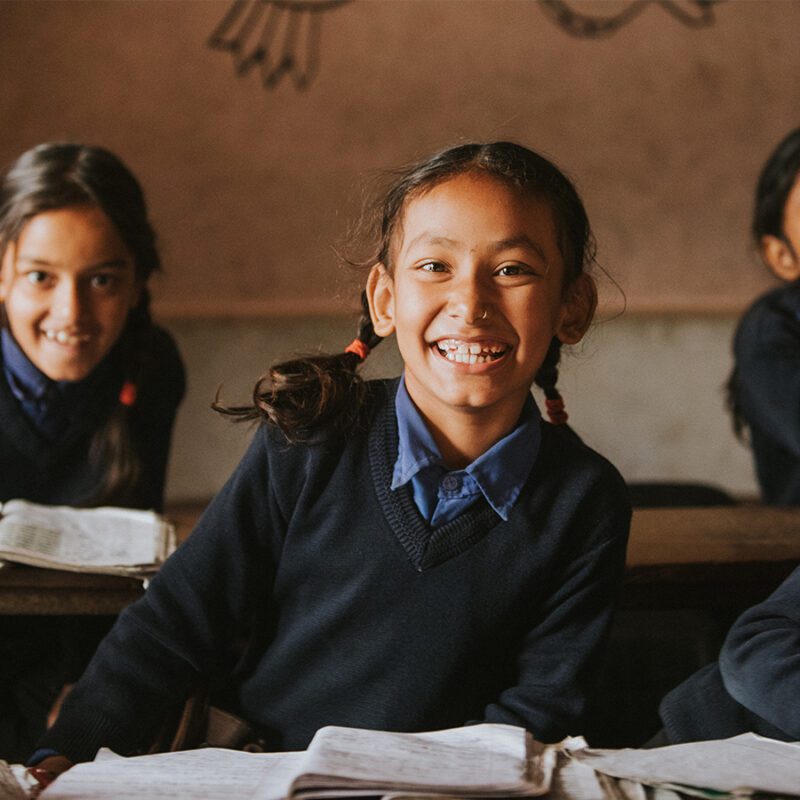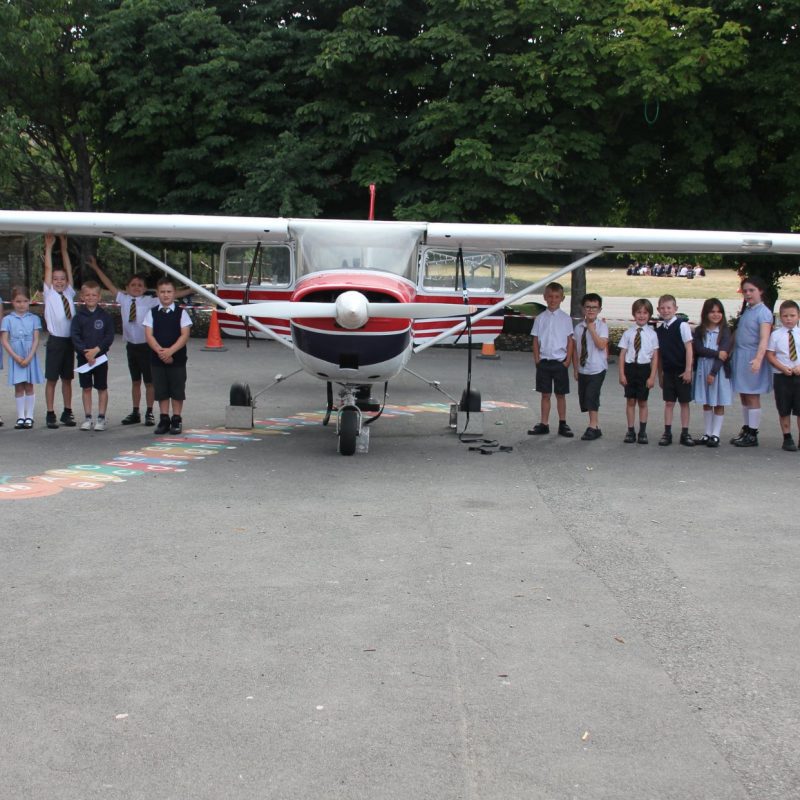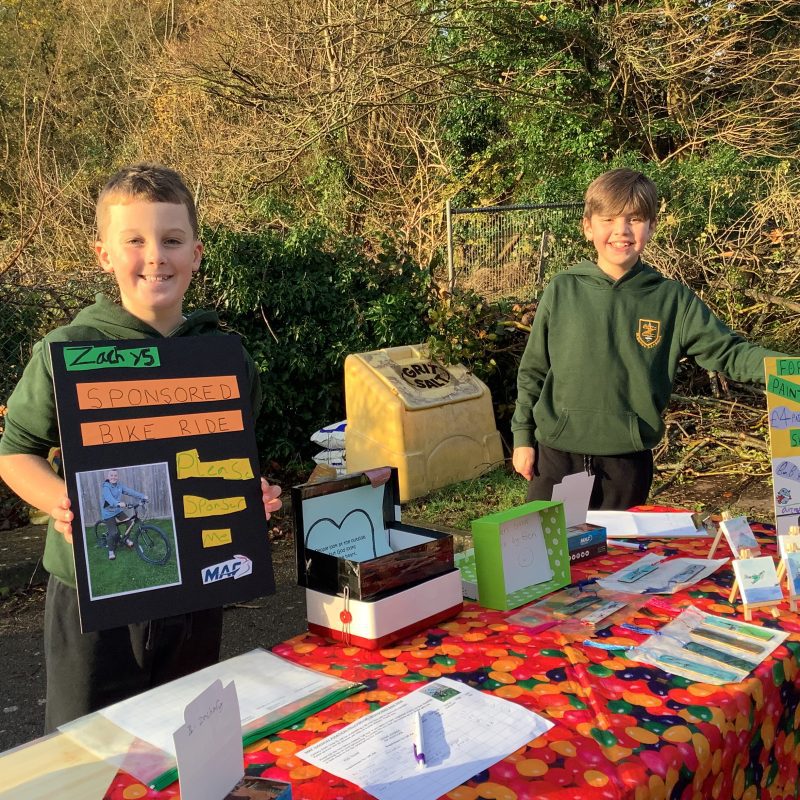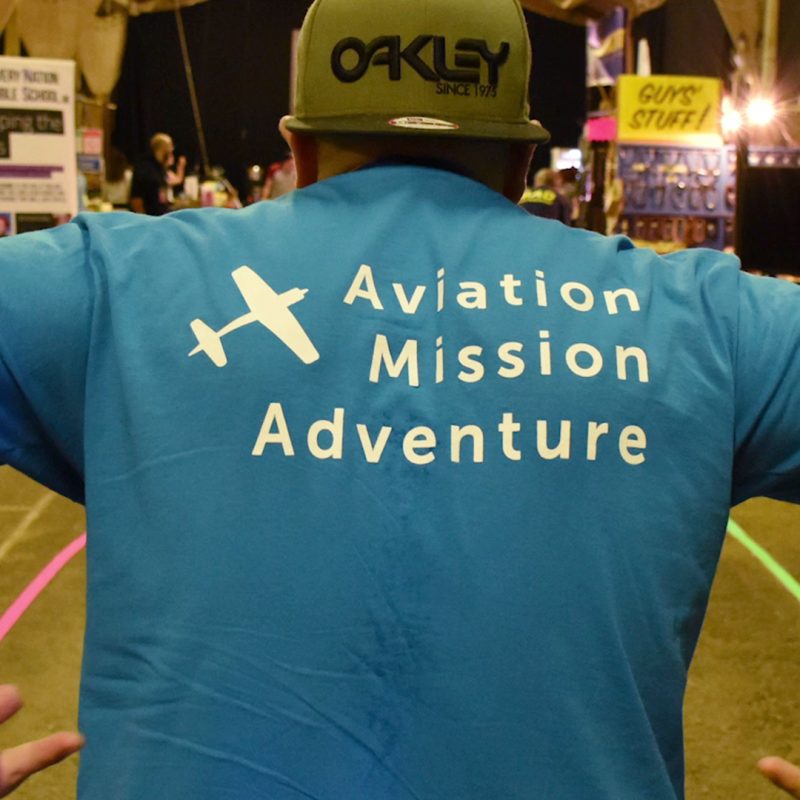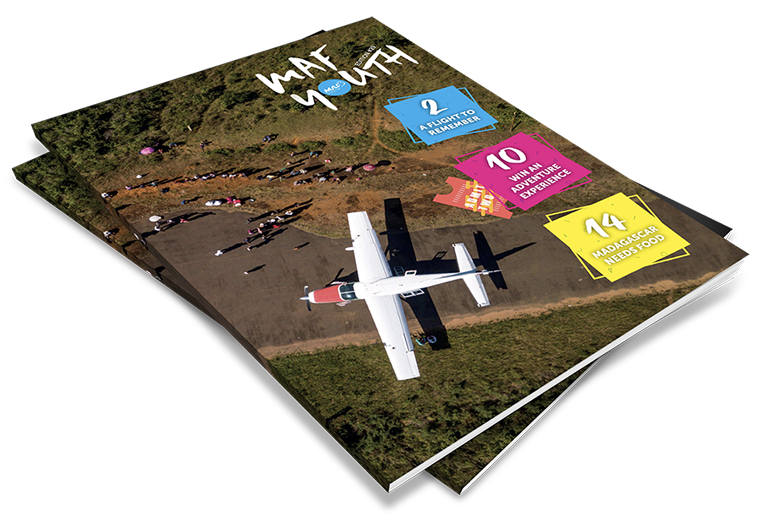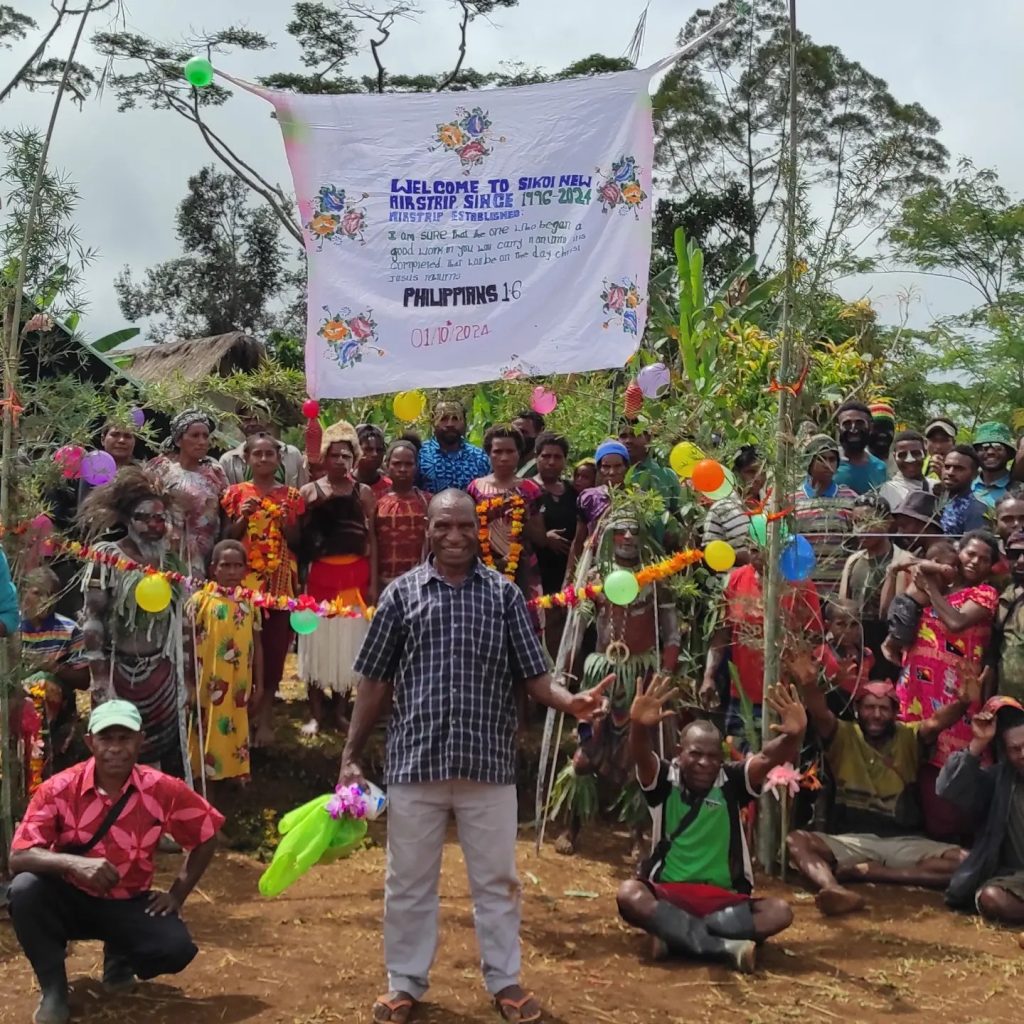
The Sikoi community welcome MAF with open arms (credit: Tim Neufeld)
Sikoi Airstrip in Jiwaka Province is the latest airstrip to open in rural Papua New Guinea. It follows the opening of Rum Airstrip in November, Yakona and Dimanbil in October and Aiyu in September. Most of PNG’s population live in remote areas without decent roads. For many, airstrip access is a matter of life or death, but how do you open an airstrip in the middle of nowhere?
Surrounded by endless hills and mountain peaks, the remote community of Sikoi in PNG’s Jiwaka Province encapsulates the overwhelming sense of isolation experienced by hundreds of other villages across the country.
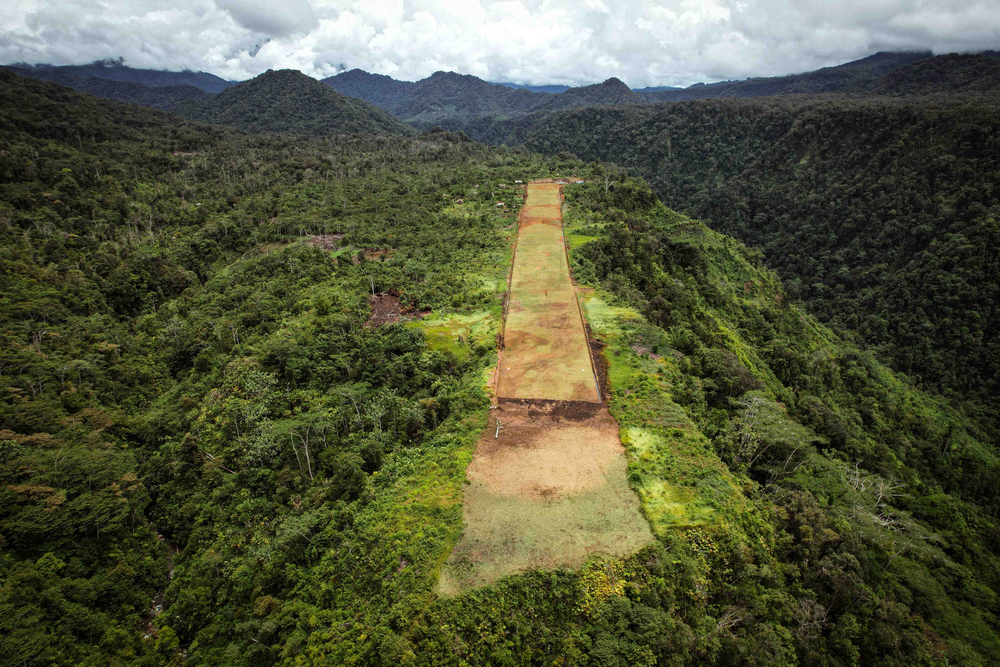
Sikoi is surrounded by endless hills and mountain peaks (credit: Jonny Watson/RAA)
The only way for the people of Sikoi to overcome their isolation was to build their own airstrip, which they did!
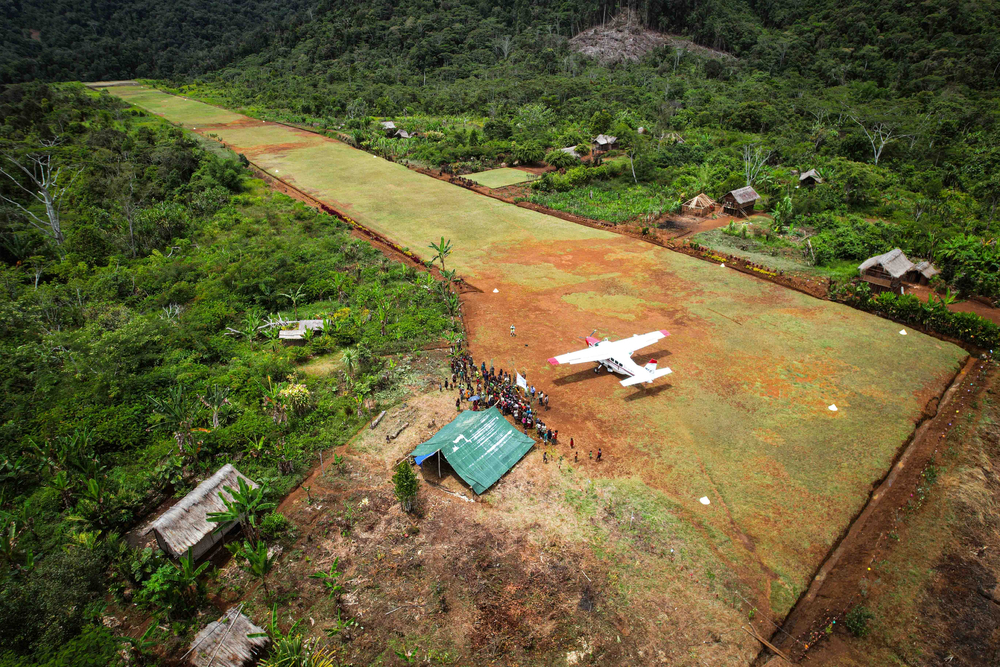
MAF’s plane was the first ever aircraft to land in Sikoi (credit: Jonny Watson/RAA)
On 10 January 2024, a plane landed there for the first time ever, signifying a new hope and a promise of connection to the outside world. That MAF plane was piloted by Tim Neufeld:
‘A new experience for me today – ours is the first airplane to ever land on this new airstrip. The people of Sikoi have no roads within a radius of several days bush walk. They are very isolated.
‘They shed tears as the plane arrived. Today, marks a turning point in this community’s history. Finding isolated people and connecting them to the rest of the world is the embodiment of what MAF is all about.’
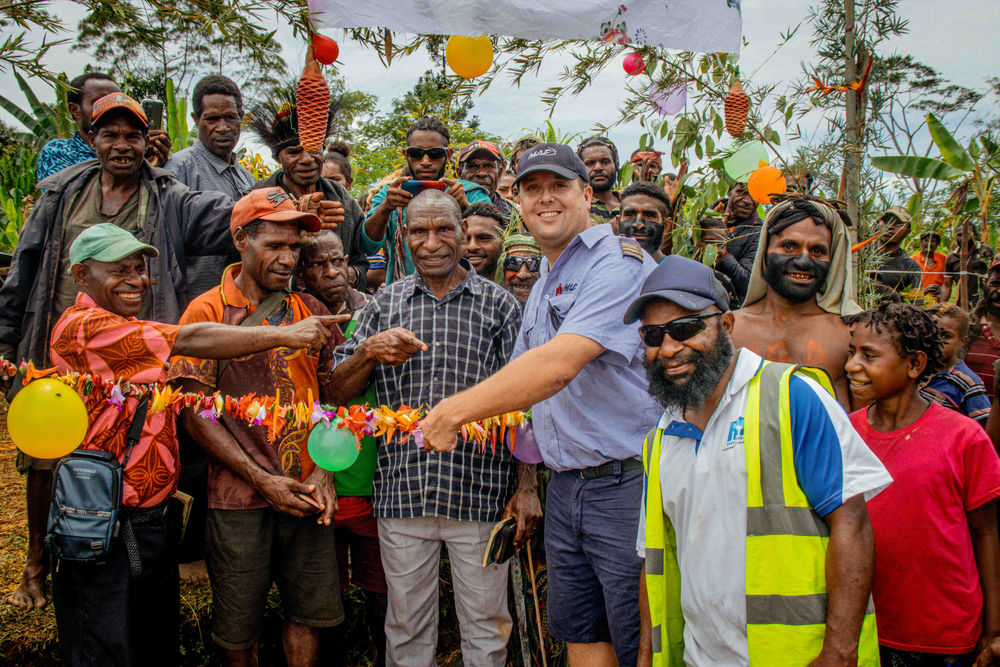
MAF pilot Tim Neufeld was met by an elated crowd (credit: Jonny Watson/RAA)
An airstrip transforms lives
According to the World Bank, 86% of PNG’s population live in rural areas, which means limited access to healthcare, education and other essential services compared to their urban compatriots.
Around eight million Papua New Guineans rely on rural airstrips to bring in essential supplies, medevac patients to hospital, transport goods to market, access schools and boost community development (source: Rural Airstrip Agency of PNG).
During the colonial period, 800 rural airstrips in PNG were created, but today, only 300 are functioning. Many have fallen into disrepair and / or aren’t economically viable to run.
Sikoi’s community leader Enn Gandi explains how living without a functioning airstrip nearby has blighted his people’s lives for decades:
‘We haven’t had any teachers, schools, health centres or healthcare workers here since 1975 – not even an educated individual from our village. Today however, signifies a new beginning for Sikoi, and we acknowledge MAF and the RAA for bridging the gap that has been here for so long.’
Enn Gandi, Sikoi’s community leader
In 2013, MAF established the Rural Airstrip Agency (RAA) in partnership with PNG’s government in a bid to restore and maintain remote airstrips, provide isolated communities greater access to essential services, and improve rural aviation safety.
The RAA works closely with cut-off communities to build new airstrips or repair and maintain existing ones.
Following an initial assessment and recommendations, the community offer up labour to help carry out the work required under the guidance of the RAA. Equipment is provided by the RAA.
When the work is complete, MAF undertakes a risk assessment followed by an aerial inspection and test landing in an empty plane, piloted by an experienced pilot.
This final test ultimately decides whether standards have been met and if the airstrip can be safely opened for both passengers and cargo.
Rum Airstrip reopens in November
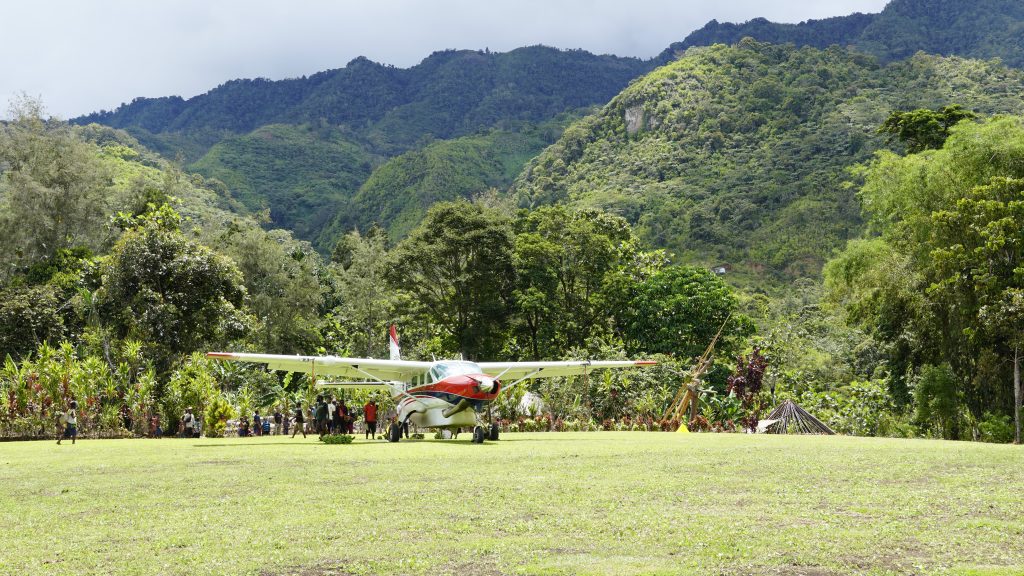
MAF is a lifeline for the people of Rum (credit: Tajs Jespersen)
Like Sikoi, the community of Rum in Enga Province, northern PNG know all about isolation. Rum does not have any schools, hospitals or shops within the vicinity.
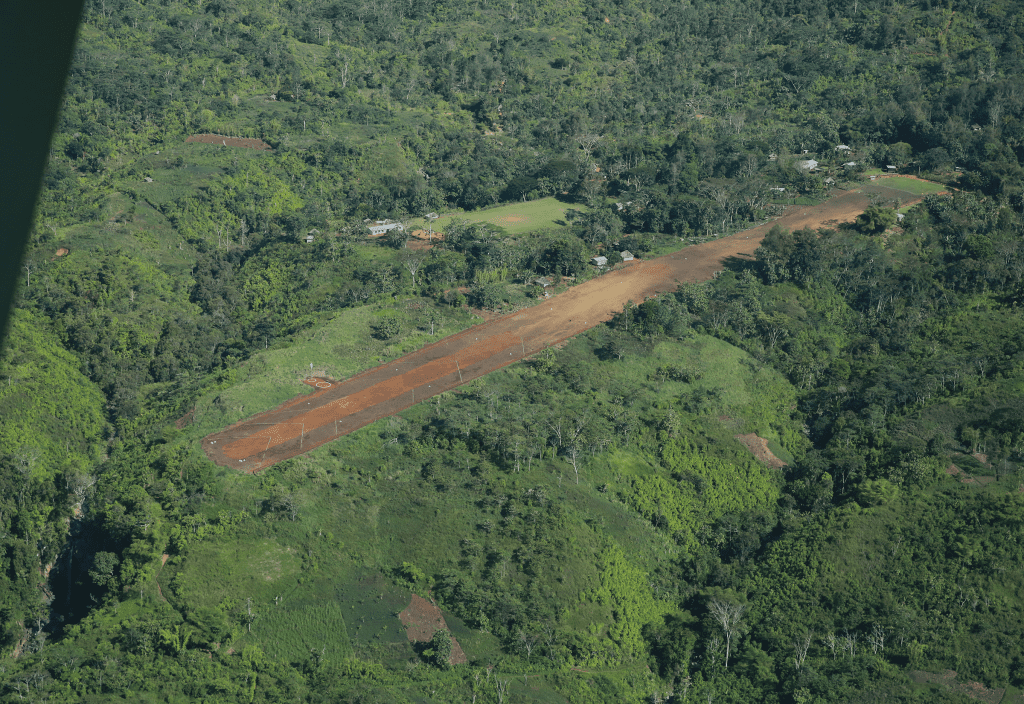
When Rum Airstrip fell into disrepair, it cut people off for 6 years (credit: Tajs Jespersen)
Six years ago, their airstrip fell into disrepair making it too dangerous for MAF planes to land.
Without their lifeline to the outside world, they suffered. Mr Paeyo – Rum’s community leader – recalls the hardship when their airstrip was out of action:
‘We faced many problems, especially with sick patients, accidents and ladies giving birth. We had to carry them by stretcher on our shoulders and climb up this mountain and then down to Kompiam to get help.
‘When we needed cooking oil, soap and other essentials, we had to walk hours to reach the village of Baier, but some people fell into the river on the way, and we never found their bodies.’
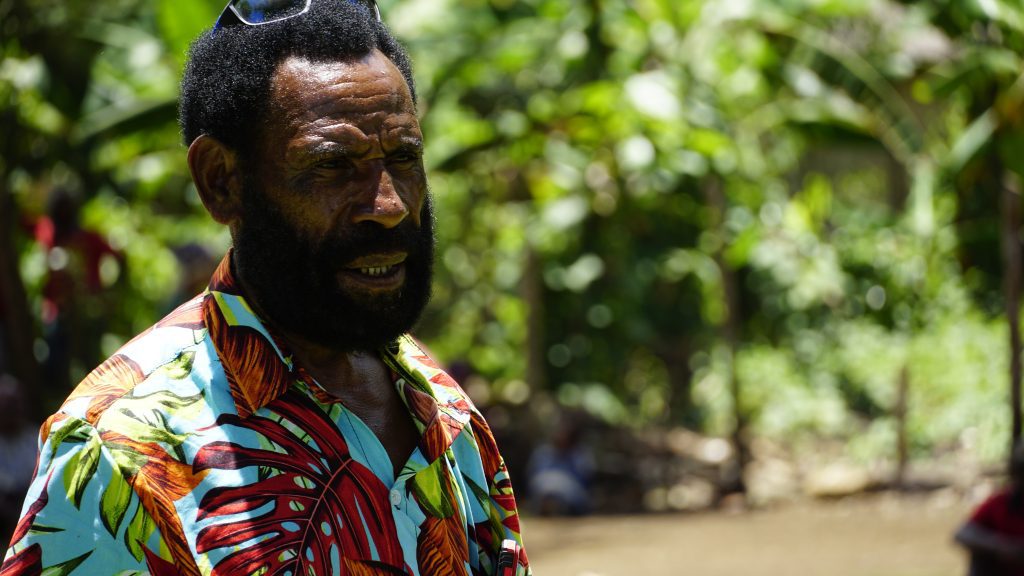
Mr Paeyo says they ‘faced many problems’ without the runway (credit: Tajs Jespersen)
In November, that all changed. After years of hard graft, the RAA and the community finally completed the airstrip’s restoration, transforming lives for the better.
The RAA protects pilots and passengers
Without the RAA, safety is compromised explains MAF PNG pilot Mathias Glass:
‘The RAA helps MAF by maintaining airstrips so that MAF can provide services to these communities. Without the RAA, these remote airstrips in PNG would deteriorate to the point where landing or taking-off would risk damaging the aircraft or risk injuring people inside or outside the aircraft.
‘RAA restores airstrips so that we can safely provide our flight service to the isolated people of PNG.’
Mathias Glass, MAF pilot in Papua New Guinea
Bush airstrips require constant maintenance including keeping the grass short and keeping drainage clear from debris.
Both tasks can be carried out by the community, but some airstrips require greater intervention from the RAA to maintain safety standards continues Mathias:
‘Rain and flooding can erode surfaces over time. If water doesn’t drain away, the ground will get too soft to the point where it can’t support the weight of an aircraft anymore. During landing, there’s a risk of one of the wheels sinking into the ground. When one wheel sinks lower than the other, it causes the aircraft to turn, forcing it off-centre. This has caused accidents in the past.’
Another potential pitfall is a ‘draggy’ surface, which refers to an airstrip that has too much friction or resistance.
This makes it challenging for an aircraft to achieve the necessary speed needed for take-off, especially when carrying a heavier load. Flying passengers in these conditions would compromise passenger safety.
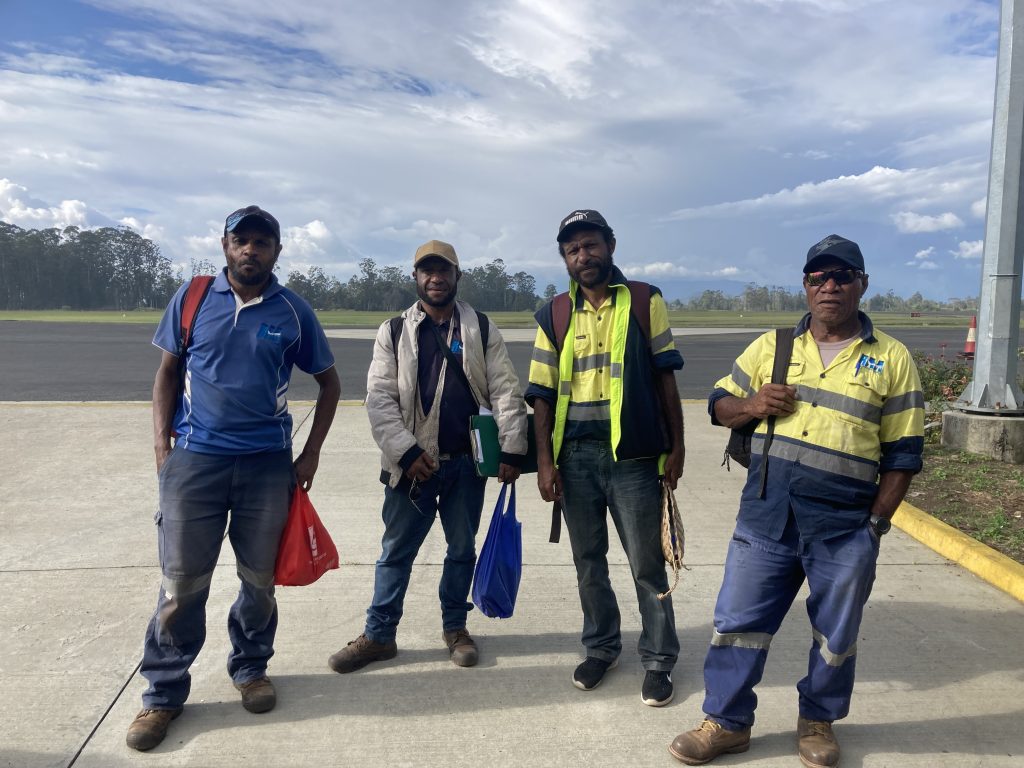
RAA (L-R): Alphonse Waim, Eric Peter, Michael Masa & Michael Anggo (credit:T Jespersen)
Whatever the problem, Mathias is impressed by the diligence and quality of RAA’s work to meet MAF’s safety standards:
‘I have observed how they survey airstrips. I am impressed with the tools they use to get data and what measures they implement to improve the surface.
‘Sometimes, an RAA officer needs to stay several days at an airstrip to fix an issue, like digging drains with the locals. I admire their willingness to stay overnight in
the lowlands or highlands.’
Credit must also be given to the hard work and ongoing vigilance of the communities. Jonny Watson, the RAA’s acting technical team manager, pays tribute:
‘The RAA provides tools and expertise, but really it’s the communities who do the rest – we just empower them to make sure that they can do their job.’
‘Forgotten’ Yakona opens in October
For years, the people of Yakona felt forgotten by the world.
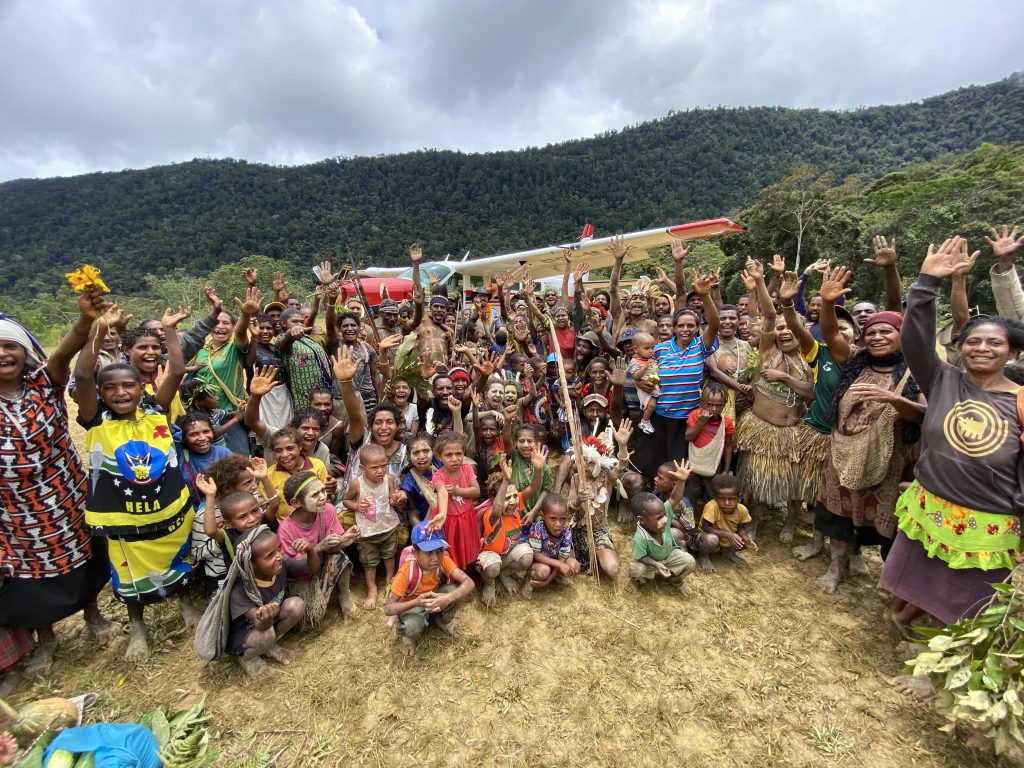
Before they built their airstrip, the people of Yakona felt forgotten (credit: Siobhain Cole)
Tucked away in the remote corner of PNG’s Hela Province in western PNG, they had no airstrip to call their own, so they built one from scratch.
Before MAF, they had to trek for a whole day in the bush to reach their closest airstrip.
That’s one day’s walk to be medevacked by plane to hospital in a medical emergency and one day’s walk to buy tools and materials to fix their home. Dropping off kids to school meant walking for a day to put them on a plane destined for boarding school.
Their hardship had to be overcome by hard work – building an airstrip was the answer.
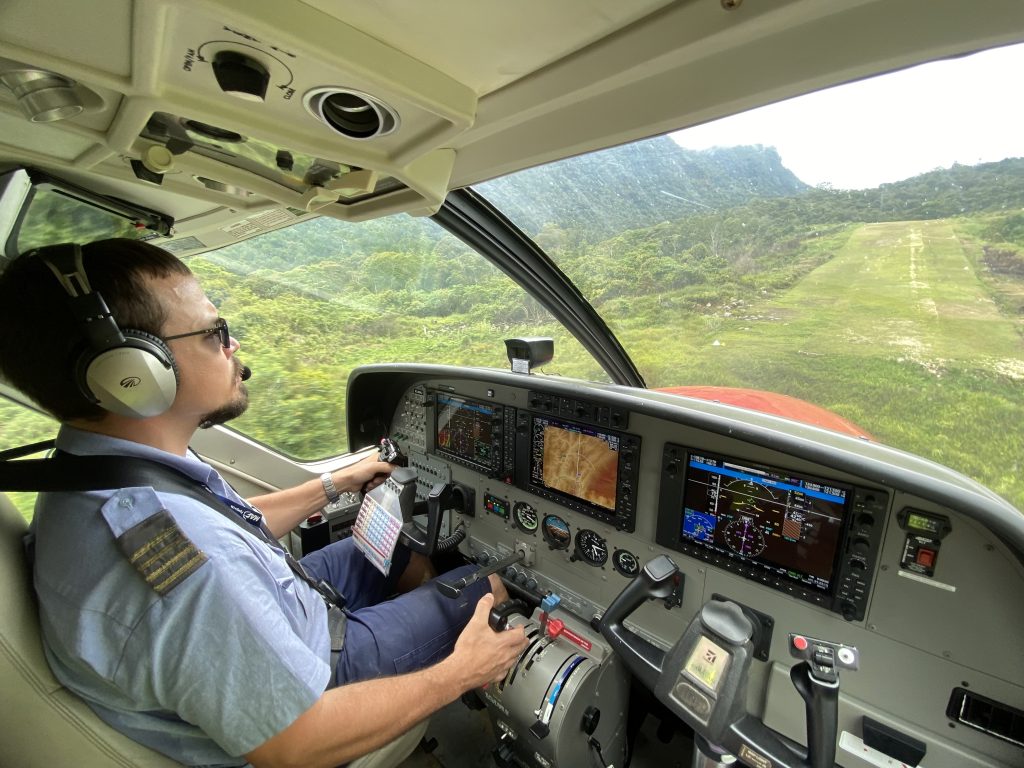
MAF pilot Ryan Cole lands the first plane on Yakona’s new airstrip (credit: Siobhain Cole)
Firstly, an area of jungle had to be cleared by the community – tree roots and all. Next, the ground was levelled – soft topsoil, loose stones and gravel had to be removed to make a solid surface.
Drainage ditches had to be dug around the perimeter of the airstrip. Even trees beyond the end of the strip had to be cut down to prevent any obstruction during take-off.
After completion of the works, MAF pilot Ryan Cole was happy with his aerial inspection and test landing.
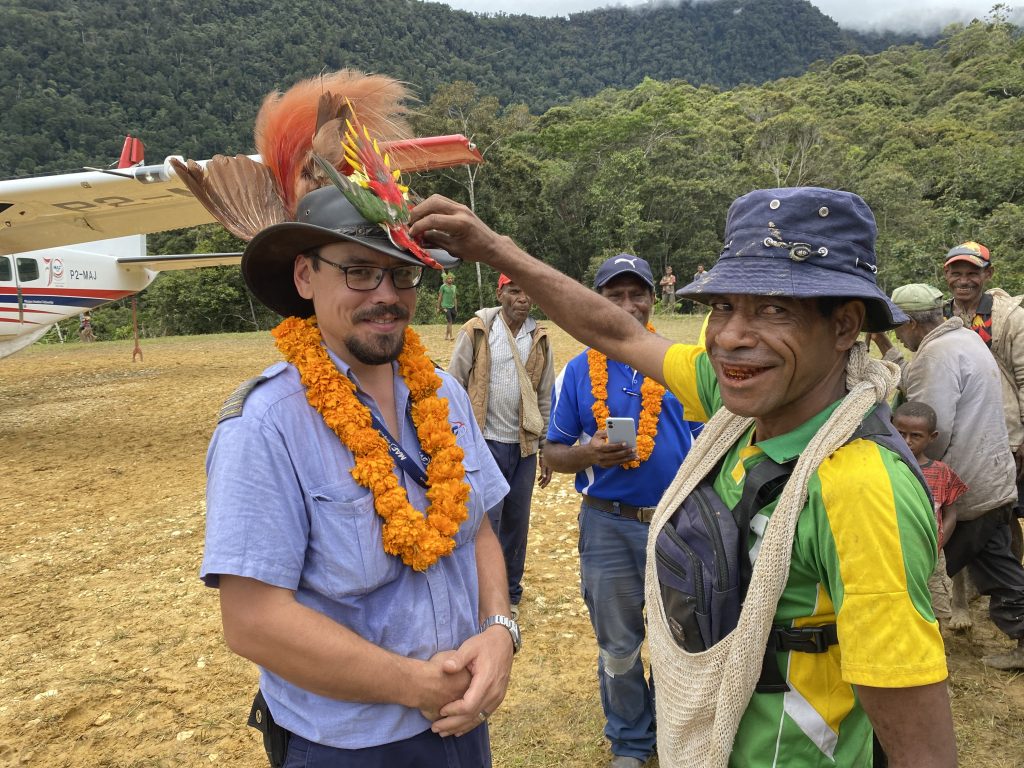
Ryan is crowned with feathers in Yakona as a token of thanks (credit: Siobhain Cole)
He returned to Yakona with two members of the RAA and a box full of Bibles and reading glasses. They were met with shouts of joy and dancing:
Yakona’s community leader spoke on behalf of the overwhelmed villagers:
‘We are in the last corner of Hela Province. No one seems to know about us, but God chose you and your plane to come and find out that people do actually live here.
‘We say thank you to the pilot (Ryan Cole) and the RAA for bringing us this blessing.’
Dimanbil’s well-wishers mob Ryan in October
October also saw the opening of Dimanbil’s brand new airstrip in western PNG near the Indonesian border.
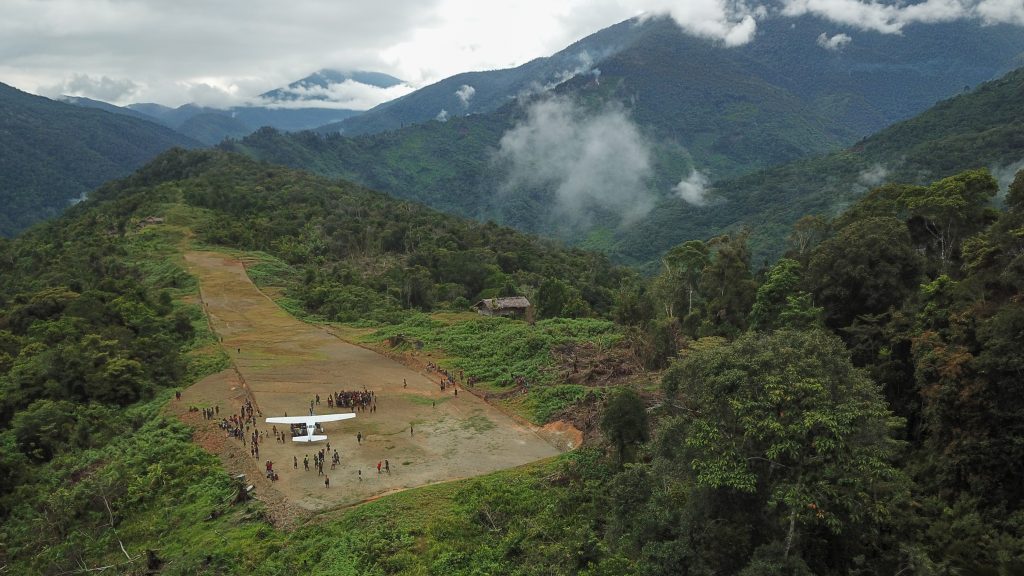
Dimanbil Airstrip opened in October 2023 (credit: Terry Fahey)
Similarly to Yakona, before MAF’s direct flight service, the community of Dimanbil had to trek for eight hours through the jungle to access their closest airstrip in Munbil.
Given that Dimanbil is really isolated and medical supplies are not readily available, many of the villagers had suffered from malaria or other preventable and treatable illnesses for years.
They had had enough, so they set to work on excavating and building their own airstrip, but to begin with, they didn’t have any tools.
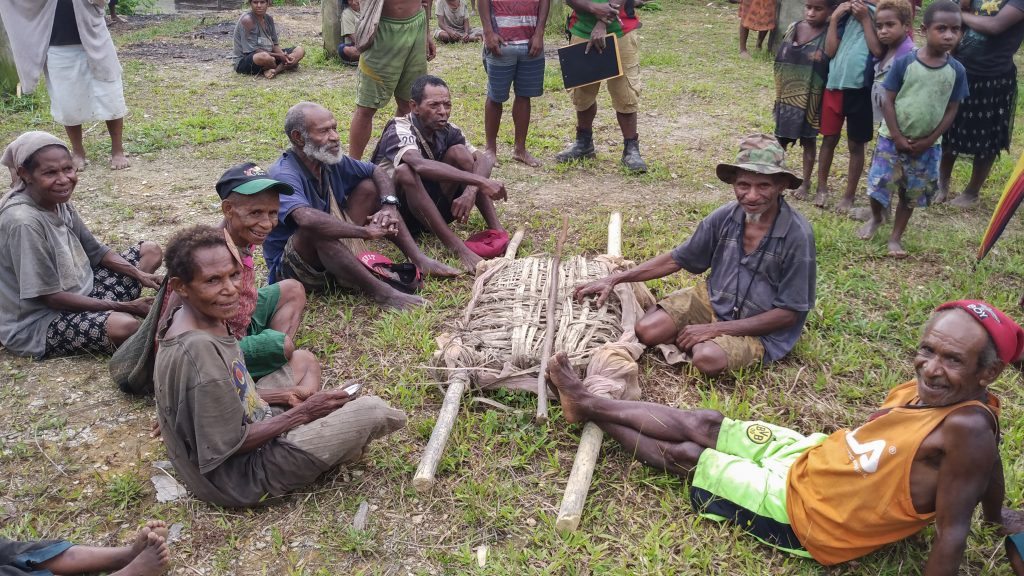
Before tools arrived, they’d excavate soil in make-shift wheelbarrows (credit: Terry Fahey)
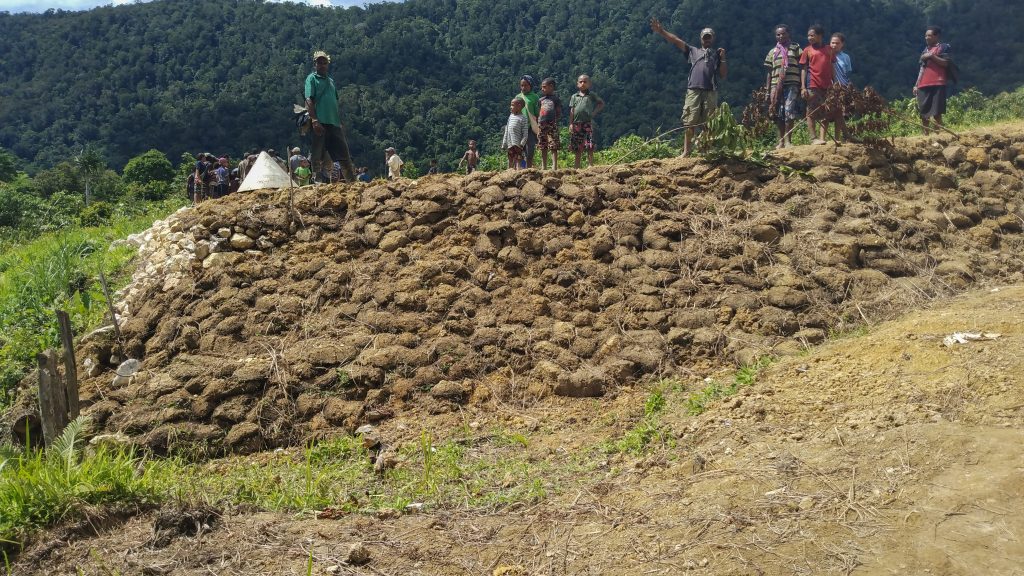
The community built their own retaining wall for the airstrip (credit: Terry Fahey)
Dimanbil’s terrain is so hazardous, delivering shovels, wheelbarrows, hoes and other essential equipment across rivers and mountains proved to be a major challenge.
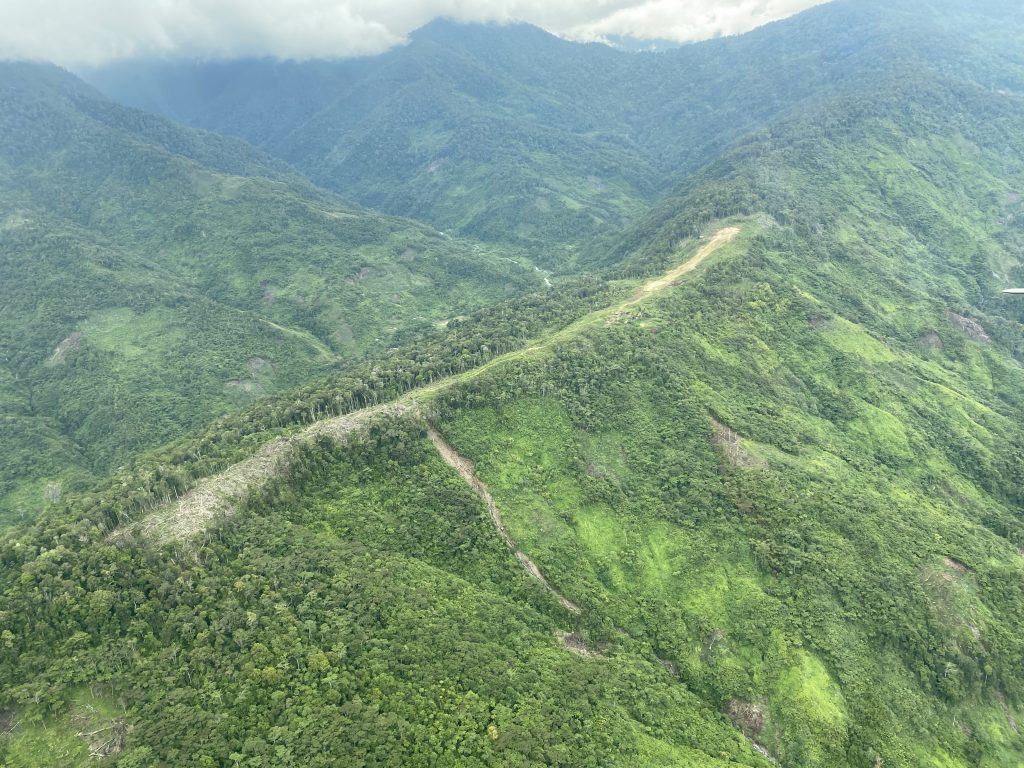
Delivering tools to Dimanbil Airstrip was a major challenge (credit: Siobhain Cole)
MAF surveyor and engineer Terry Fahey and the RAA had to arrange for a special aircraft from MAF partner Strickland Bosavi Foundation to fly in the tools and land on a completed section of the airstrip.
Years of hard work have finally paid off.
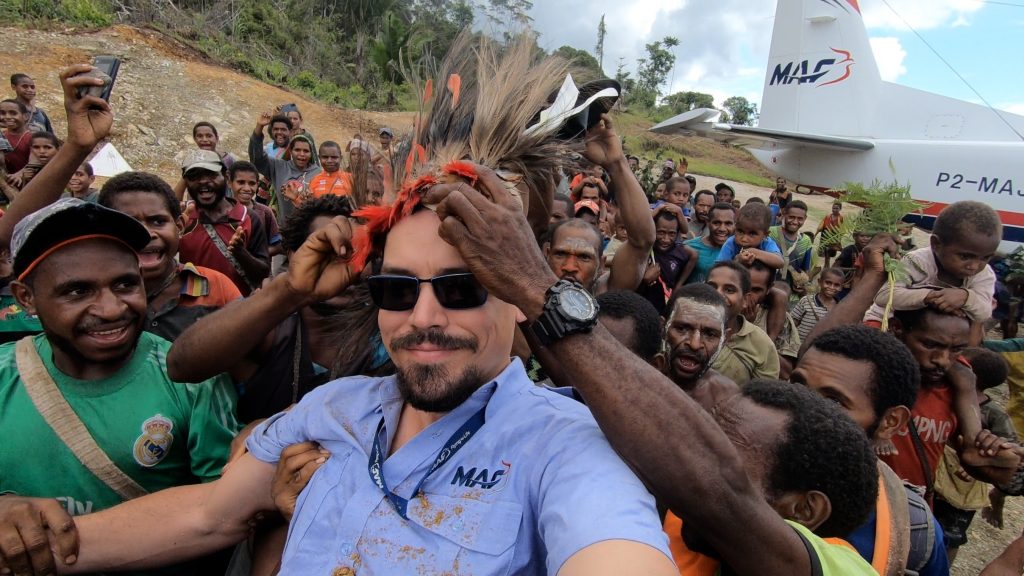
To welcome Ryan, the community hoisted him onto their shoulders (credit: Siobhain Cole)
The community was so excited to see a MAF plane land on their new airstrip for the first time that they instantly hoisted pilot Ryan Cole onto their shoulders, crowned him with feathers and took him for a victory lap around the aircraft!
Aiyu’s new airstrip opens in September
It was MAF pilot Andy Symmonds who had the privilege of carrying out the aerial inspection and test landing on Aiyu’s brand new airstrip in northern PNG.
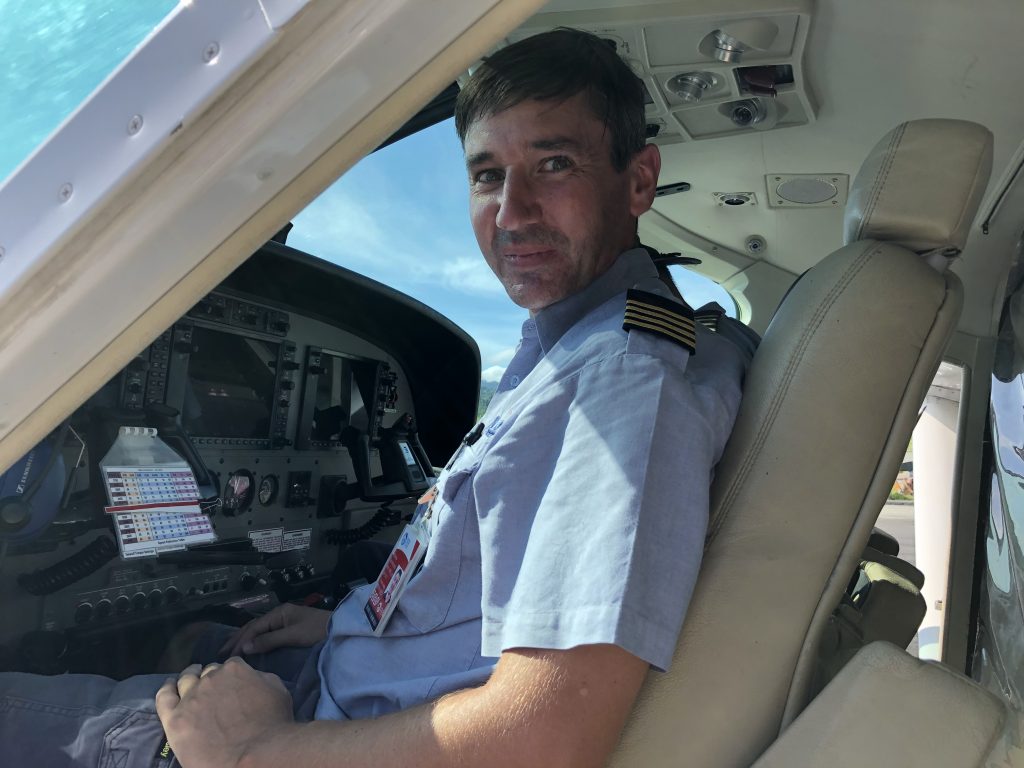
MAF’s Andy Symmonds did Aiyu’s test landing and first medevac (credit: Mandy Glass)
Unlike the four other airstrips, Aiyu only took two years to build!
This is a blessing considering its closest airstrips – Kwieftim and Edwaki – are at least one day’s trek away through swampy terrain and are often both closed due to poor conditions.
Aiyu may become the new transport hub for the area.
On landing, Andy was met with joyous singing and dancing from the community:
Speeches from local dignitaries ensued, including a few words from Andy himself in Tok Pisin, plus some instructions on how to care for and maintain their new airstrip.
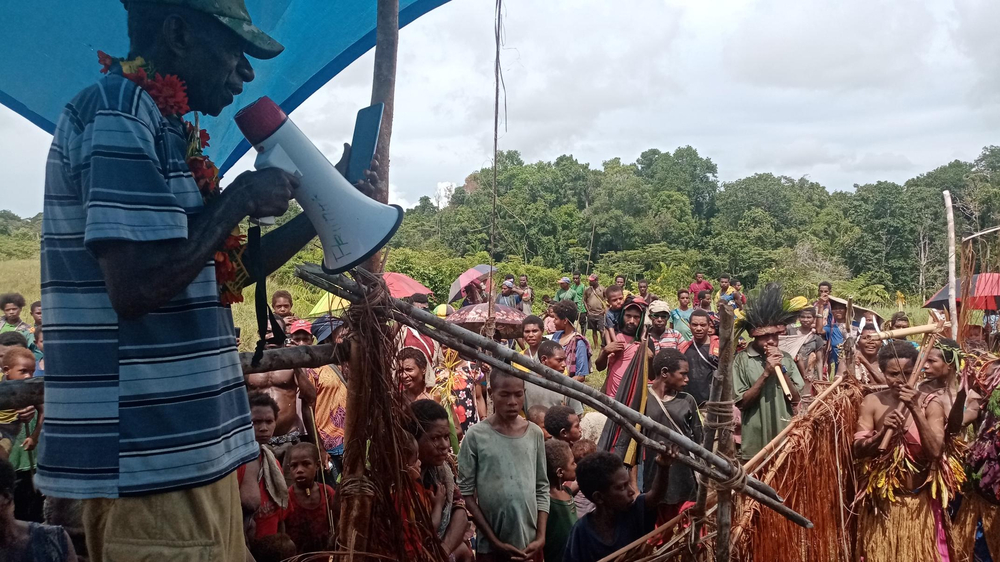
Aiyu Airstrip’s opening was marked by speeches from dignitaries (credit: Andy Symmonds)
It wasn’t long after the airstrip opened that Andy was called back to medevac a boy to Aiyu’s nearest clinic in Lumi.
He had fallen from a coconut tree, badly breaking his arm and injuring his leg.
Had it not been for MAF’s medevac, enabled by a safe airstrip, God only knows what would have happened to the boy.
As old and new airstrips open one by one in rural PNG, we pray that every single one of them will stand the test of time as MAF continues to serve future generations of isolated communities.
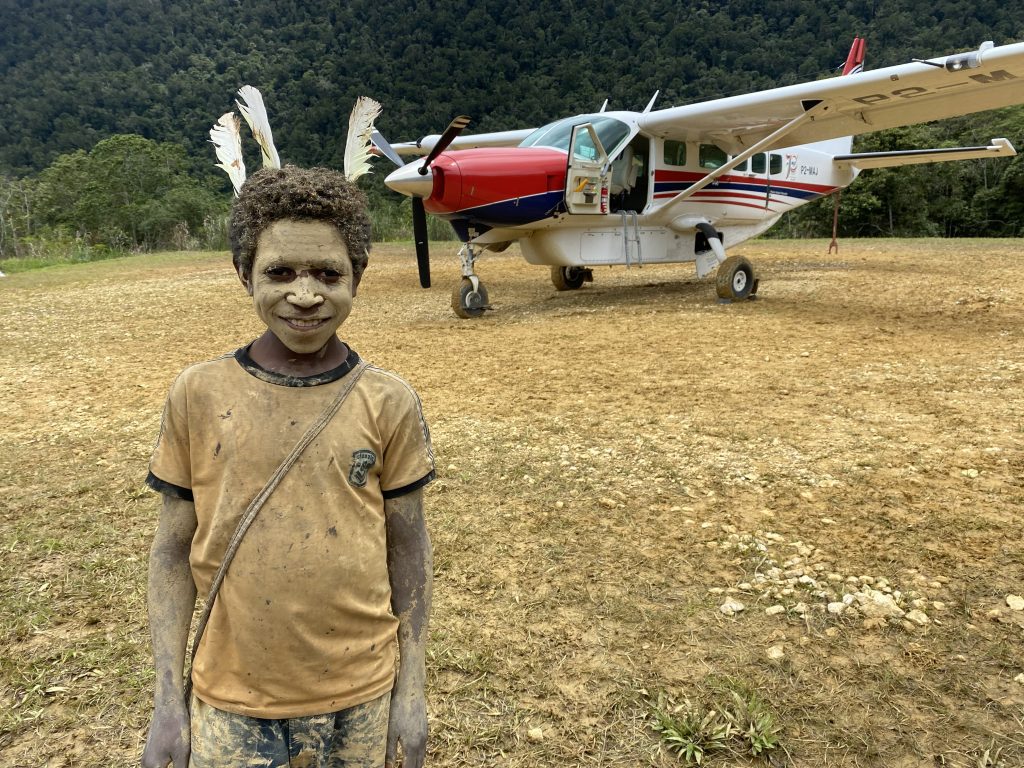
As long as PNG has rural airstrips, MAF will continue to serve (credit: Siobhain Cole)
Read about Yalum Airstrip reopening after 22 years of conflict.
